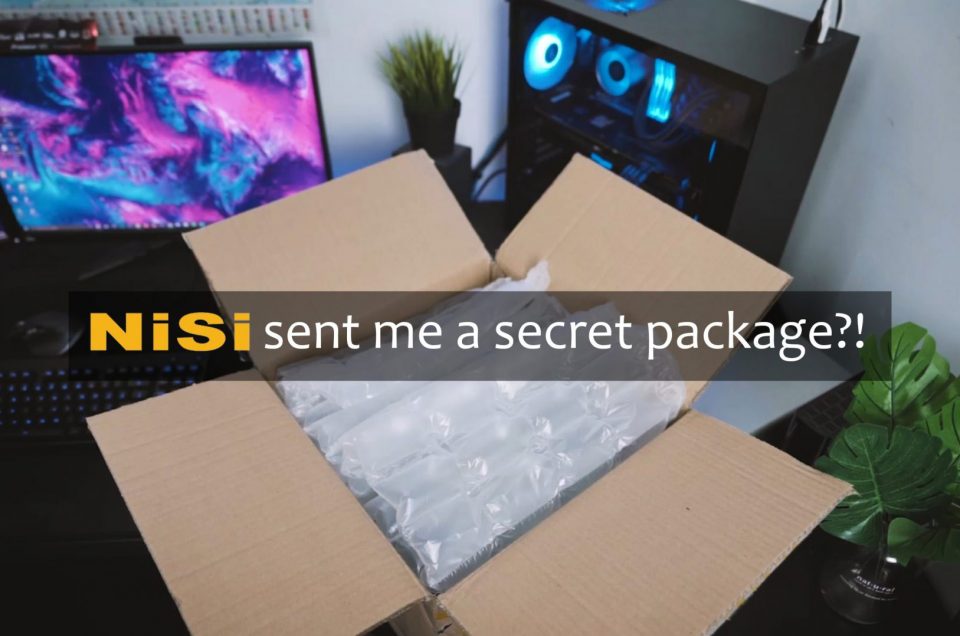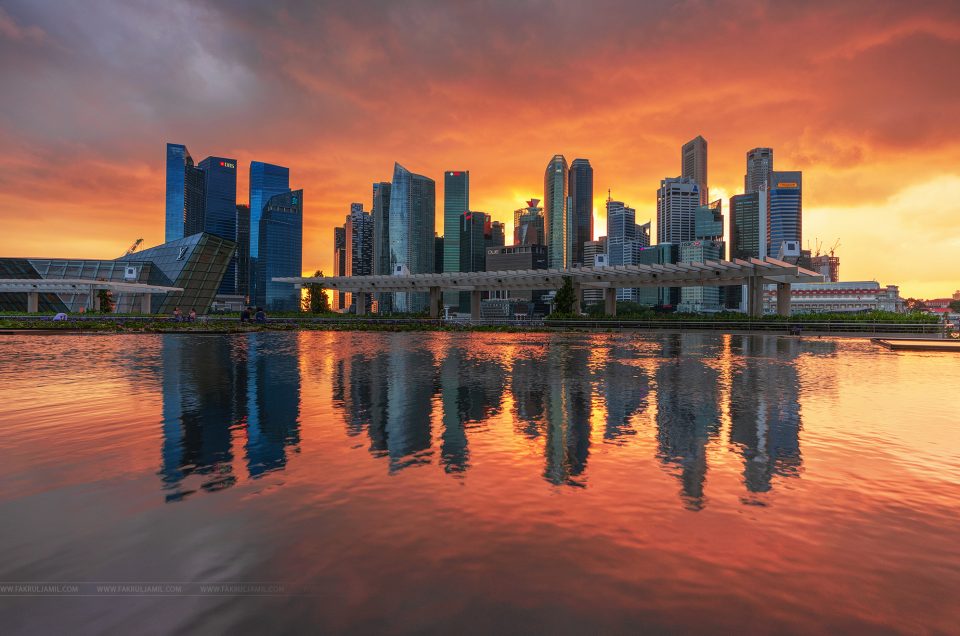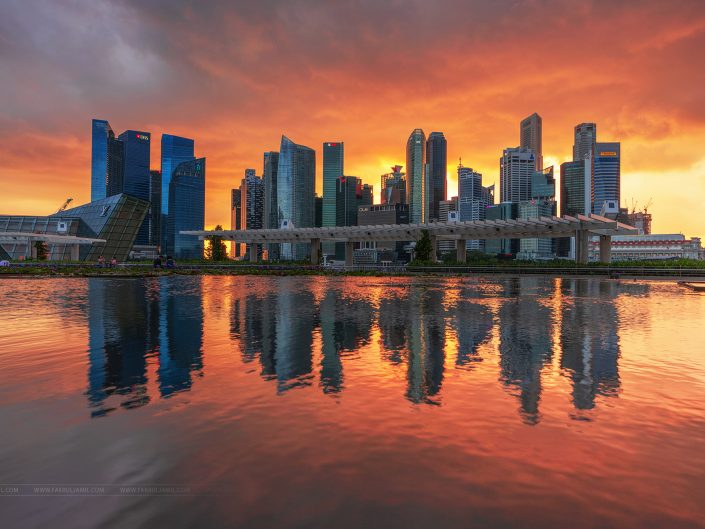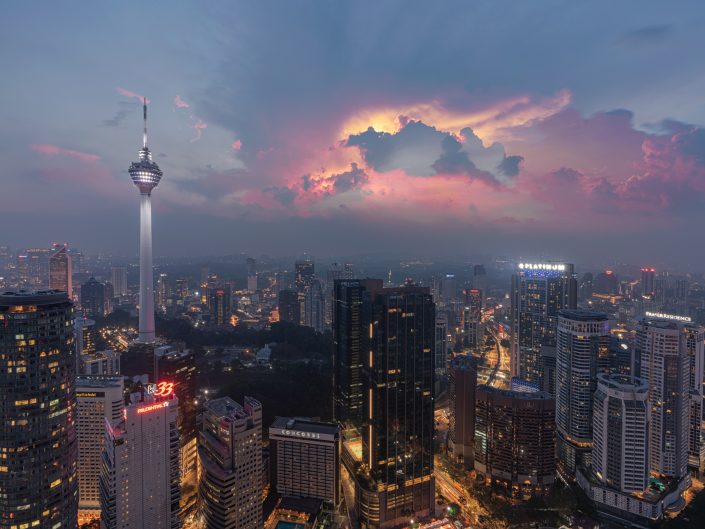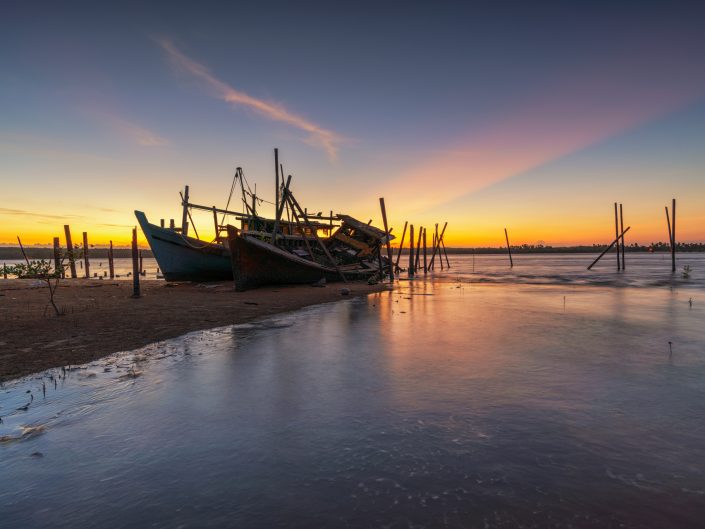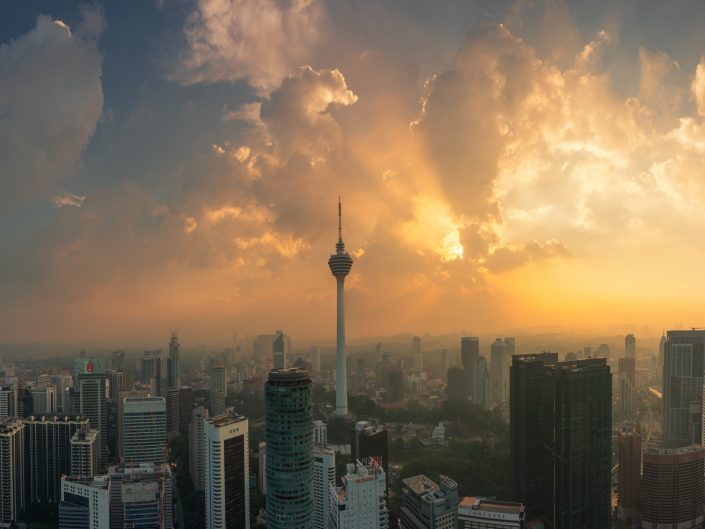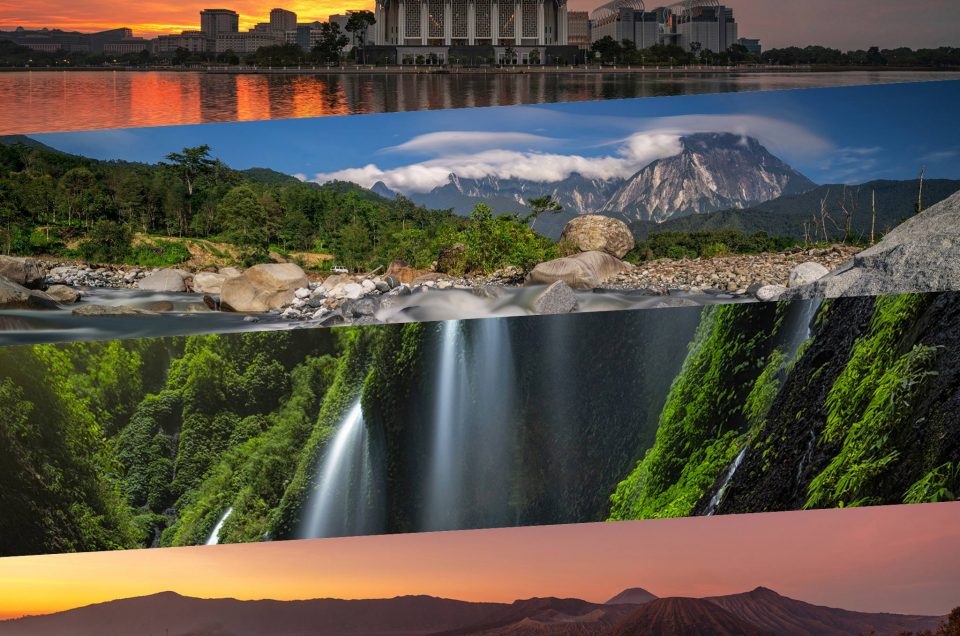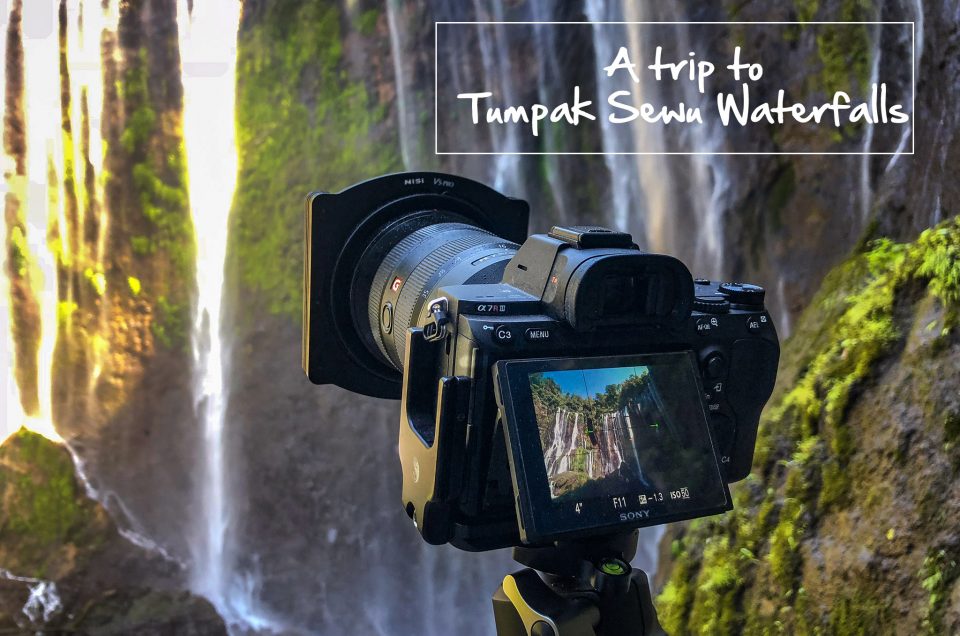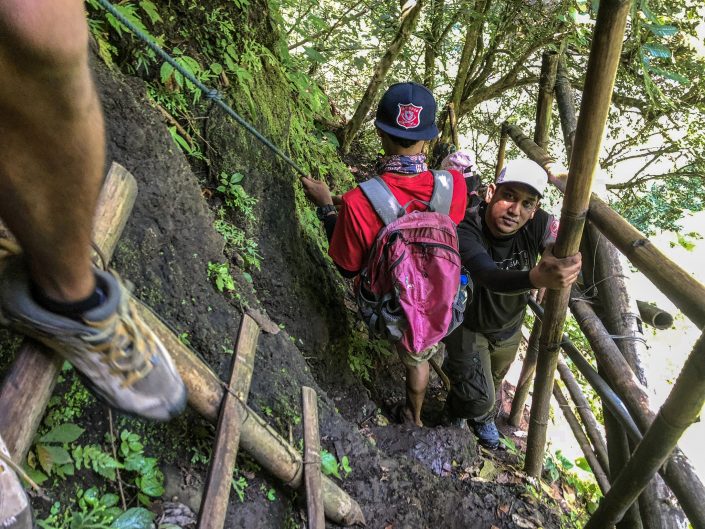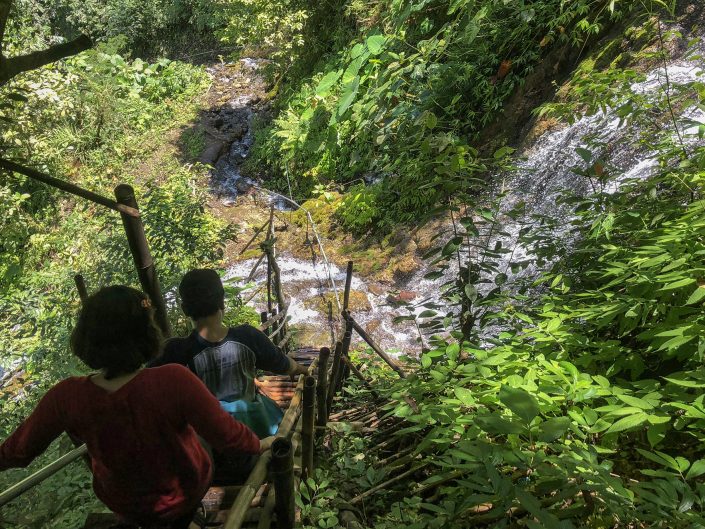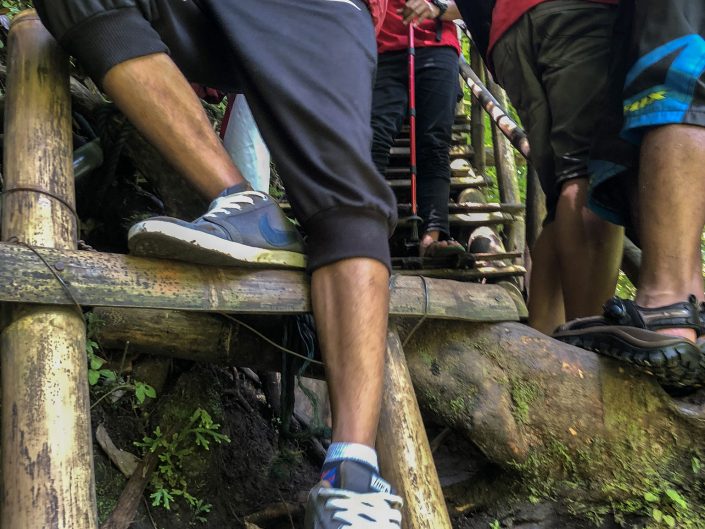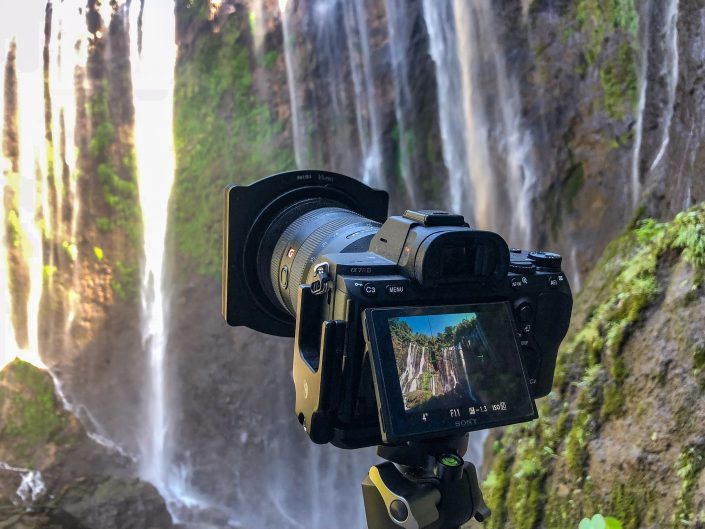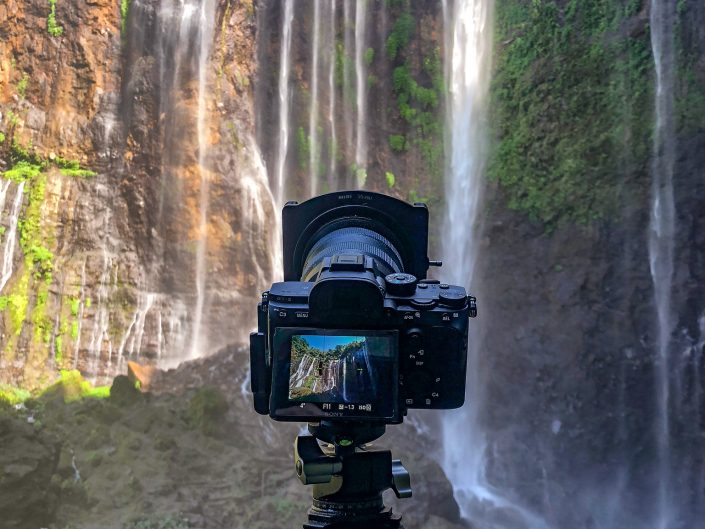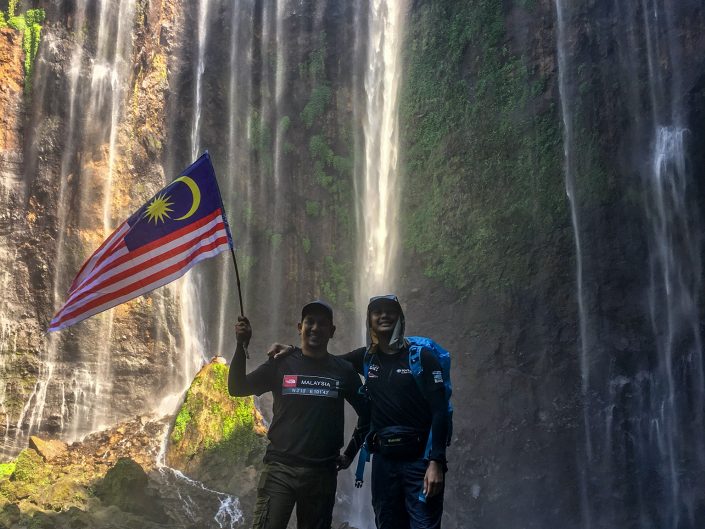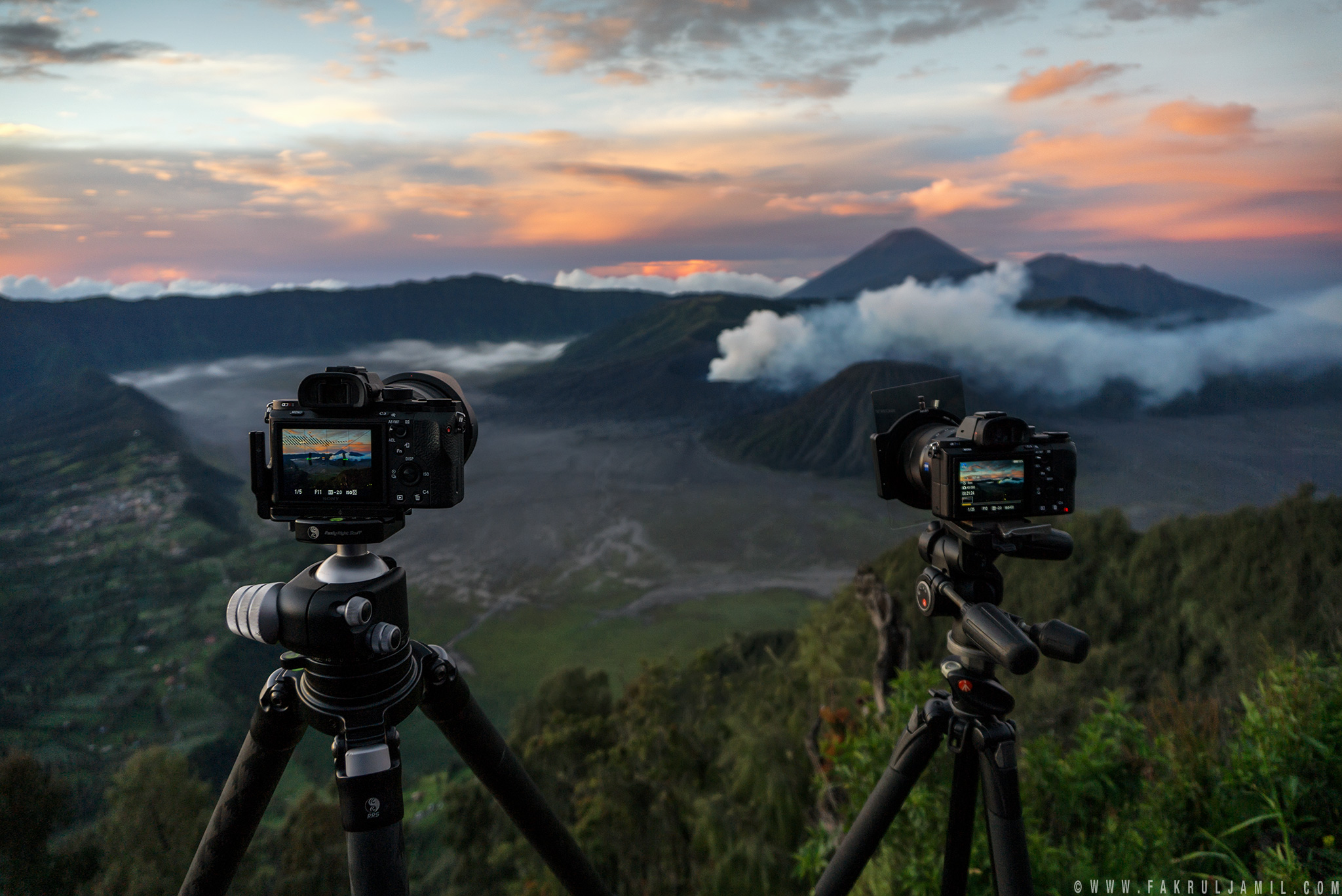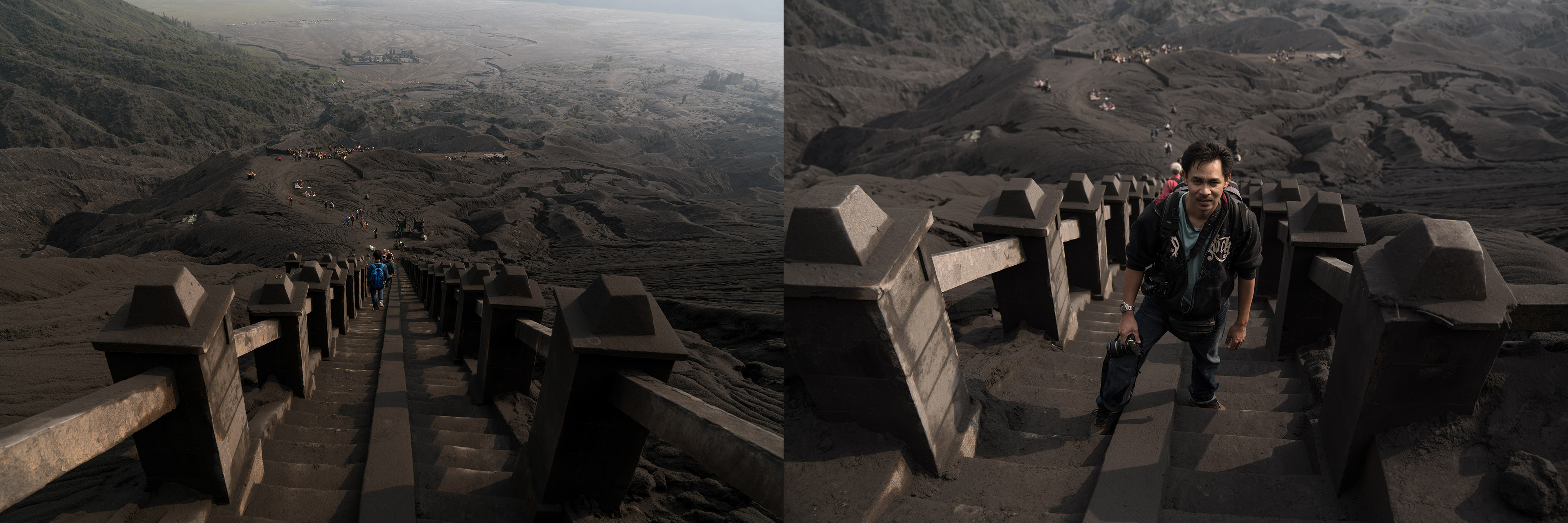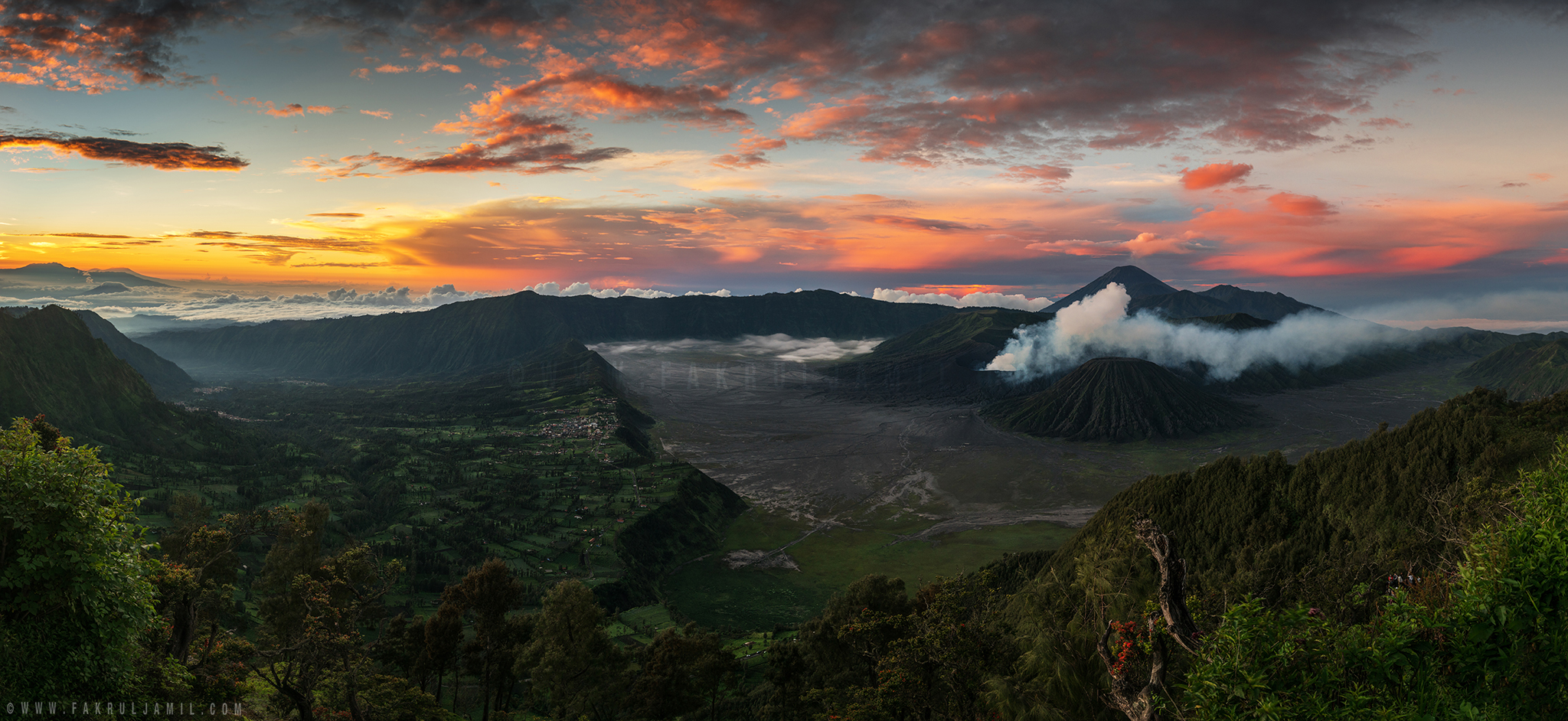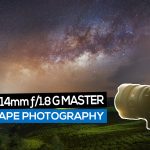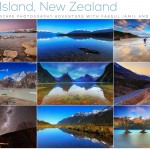In December 2021, I revisited this sunset spot after almost 10 years. I was shooting with Sony A7RIV and Sony 14mm F/1.8 Gmaster lens with NiSi S6 Filter Kit.
nisi filters
Unboxing and setting up of the new NiSi S6 Filter Holder Kit designed for Sony 14mm F1.8 GMaster lens.
After a couple of visits, I finally managed to get this single shot that I wanted for quite some time. But I had to work a bit more for this shot. More stories below.
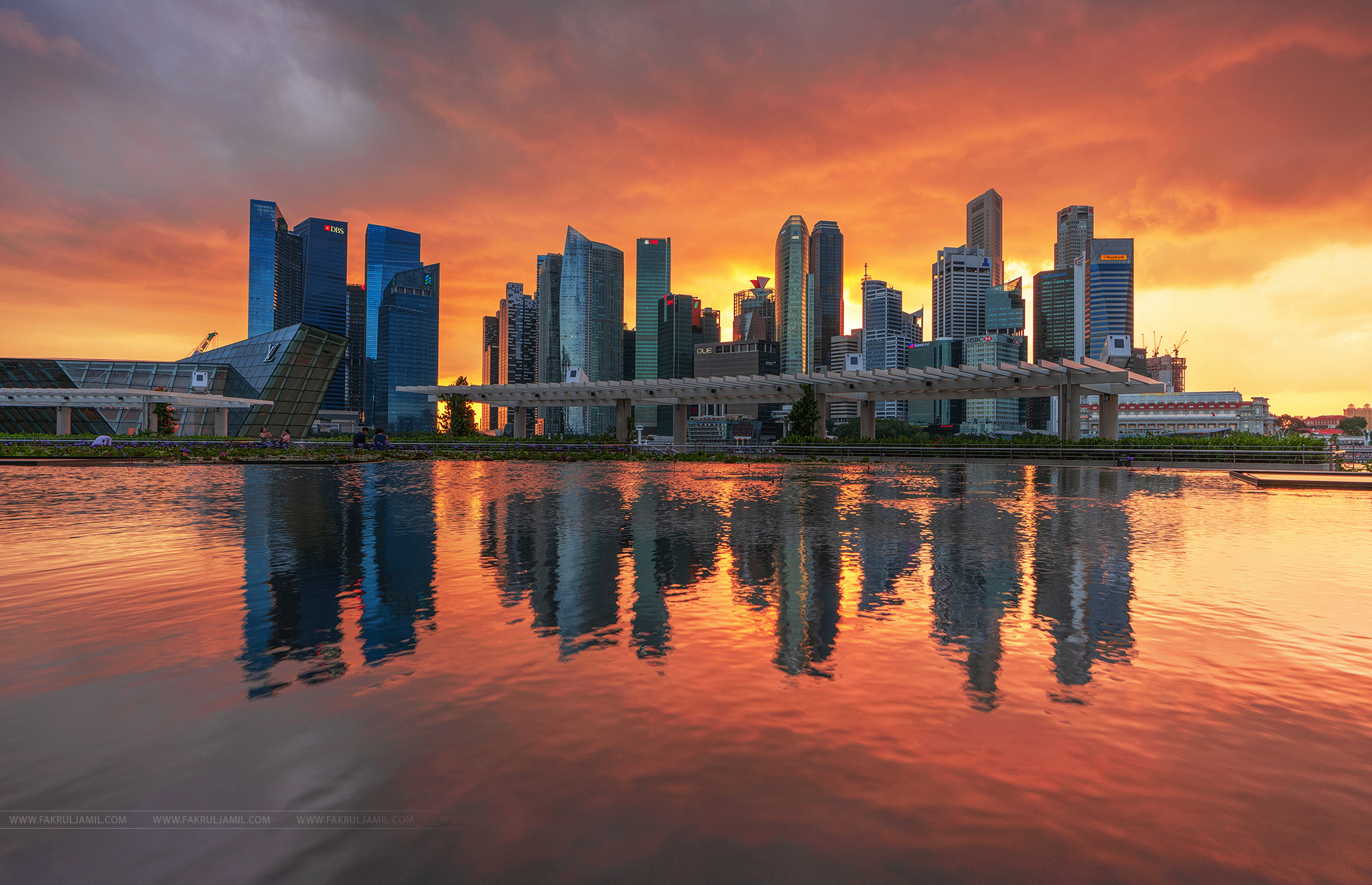
Sony A7RIII + FE 16-35mm F/2.8 G Master + NiSi V6 Holder with Landscape CPL
My hotel was 2km away from this location and I thought I have a bit more time because the sun only set in 40 minutes time. So I was walking leisurely until I notice the sky starts to change dramatically and it also looks like rain is approaching as well.
I still had like 1km to go and I know I can’t afford to miss this moment so I decided to ran frantically with all my equipment all the way to the museum. Luckily I still had a bit of stamina left so I managed to reach the spot just in time and the skies are just getting better and better.
So I didn’t know that the museum closed at 7 pm, this is when I got kicked out nicely by the lovely lady guard. By this time, the color in the sky has faded completely and just in split second, it rained heavily. I’m so glad that I ran for this shot!
For quite some time, NiSi Filters have taken the photographic filter market by storm, especially amongst the landscape photography community. Prior to 2016, I have used many filters available on the market namely – Cokin, Hoya, B+W, Hitech and Lee Filters. Most of these filters did the job, more or less, but I was looking to upgrade to a more robust, customizable and higher quality system that will benefit me when I’m out shooting in the field.
Full disclosure, since end 2016, I have been part of the Malaysian NiSi Filters ambassador. However, everything in this review will remain completely unbiased as possible.
Earlier this year, I was contacted by NiSi and they asked me whether I wanted to do a review and some videos for their new V6 Holder. Of course, I had to say yes. So here we are.
Today, we’re gonna be looking at the new and latest 100mm filter holder system from NiSi, the V6 Filter Holder Kit.
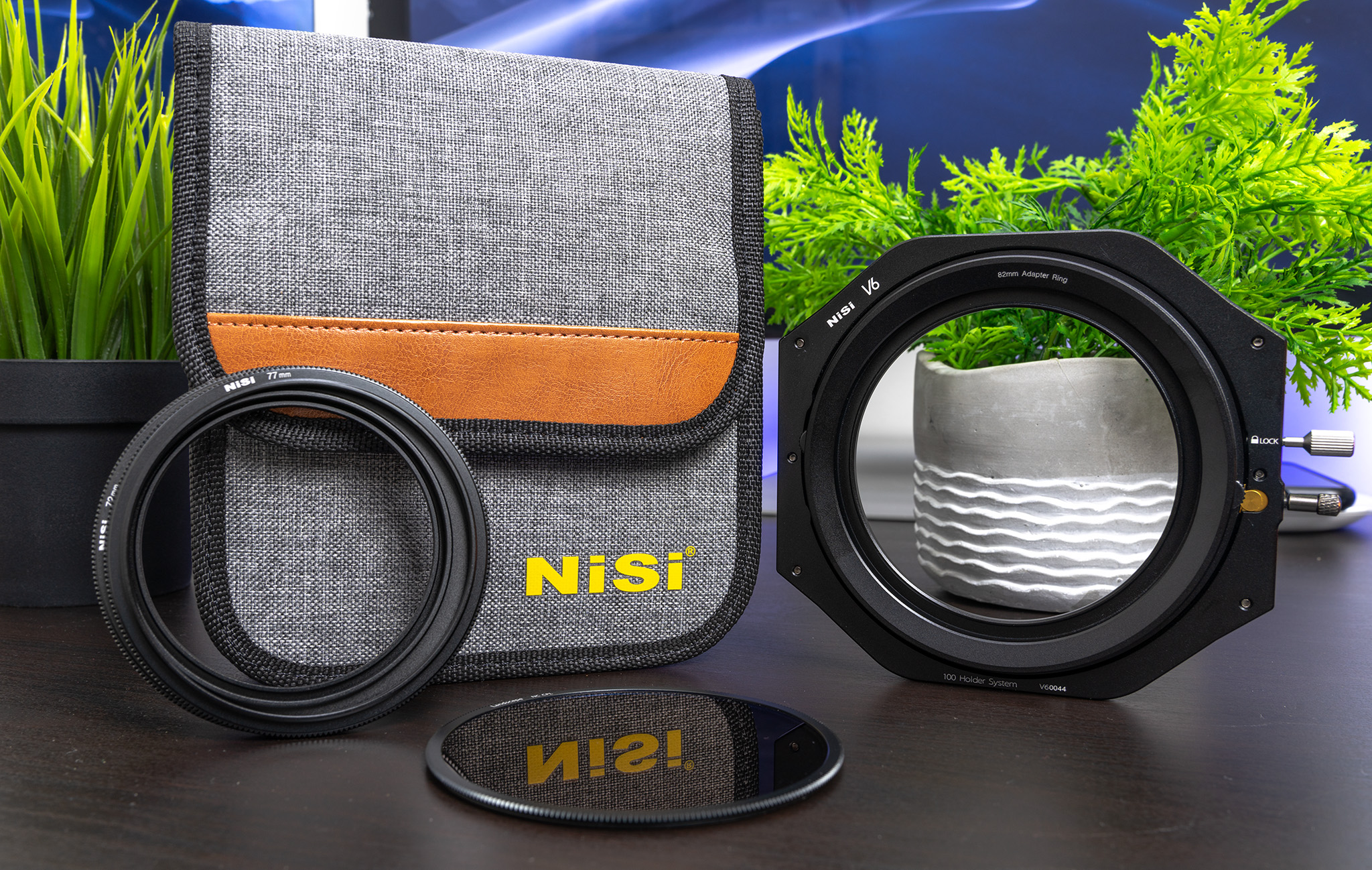
Packaging
Before this, the NiSi V5 Pro Filter Holder kit comes with a hard filter holder case. This time, they have replaced it with a soft-pouch case that feels really nice to hold and much more practical to use.
What’s Inside the Box of NiSi V6 Kit?
- Filter Holder Case (Pouch case – ideal for travel)
- V6 Filter Holder
- 82 Main Adaptor Ring
- Enhanced Landscape CPL
- 67-82mm Adaptor Ring
- 72-82mm Adaptor Ring
- 77-82mm Adaptor Ring
- Instruction Manual (which I’ve never personally looked at)
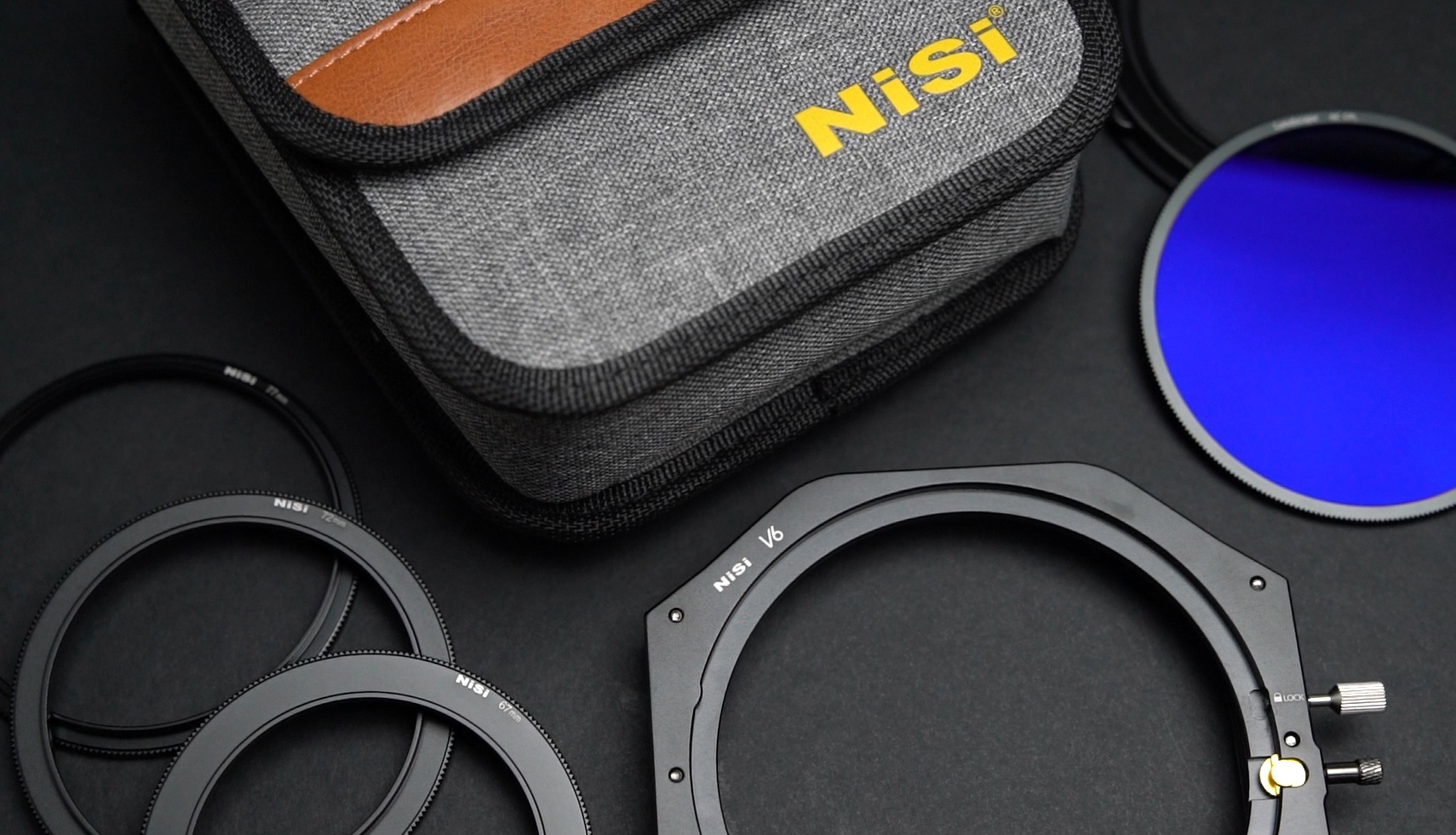
And upon unboxing it, I immediately notice that this time the V6 holder came with plastic wrapped which is something new. Nonetheless, the same care and detail in the packaging have been pretty much the same.
V5 Pro vs. V6 – What’s New?
Appearance
At first glance, the V6 Holder looks slightly smaller than the V5 Pro. This is because NiSi has redesigned the shape with purposes. From my personal experience, I found some difficulty when I wanted to remove my ND filter once a GND filter has been slotted in. With V6, NiSi has appropriately shaping the corners allowing quick insertion and removal of ND filters with ease.
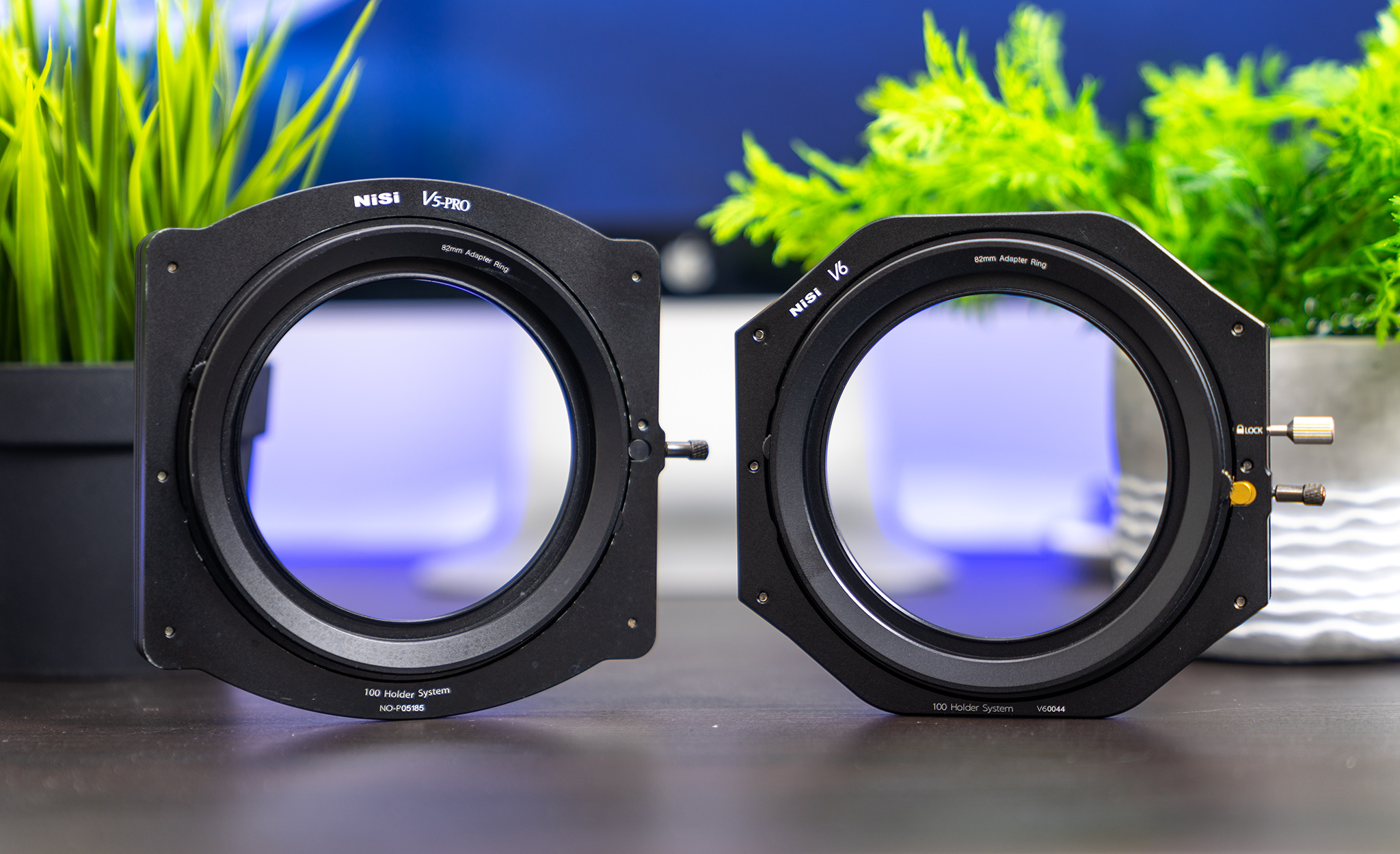
NEW Locking Screw
The new locking screw helps you to secure the holder from moving around and lock the angle of the holder in the position in which it’s set. This is important to avoid any movement of the holder during the phase of insertion or removal of a filter. It provides more stability while maintaining functionality for landscape photographers.
The lower knob, which can be found in V5 Pro, it helps to engages/disengages the holder on the adaptor ring.
Functionality/Usability
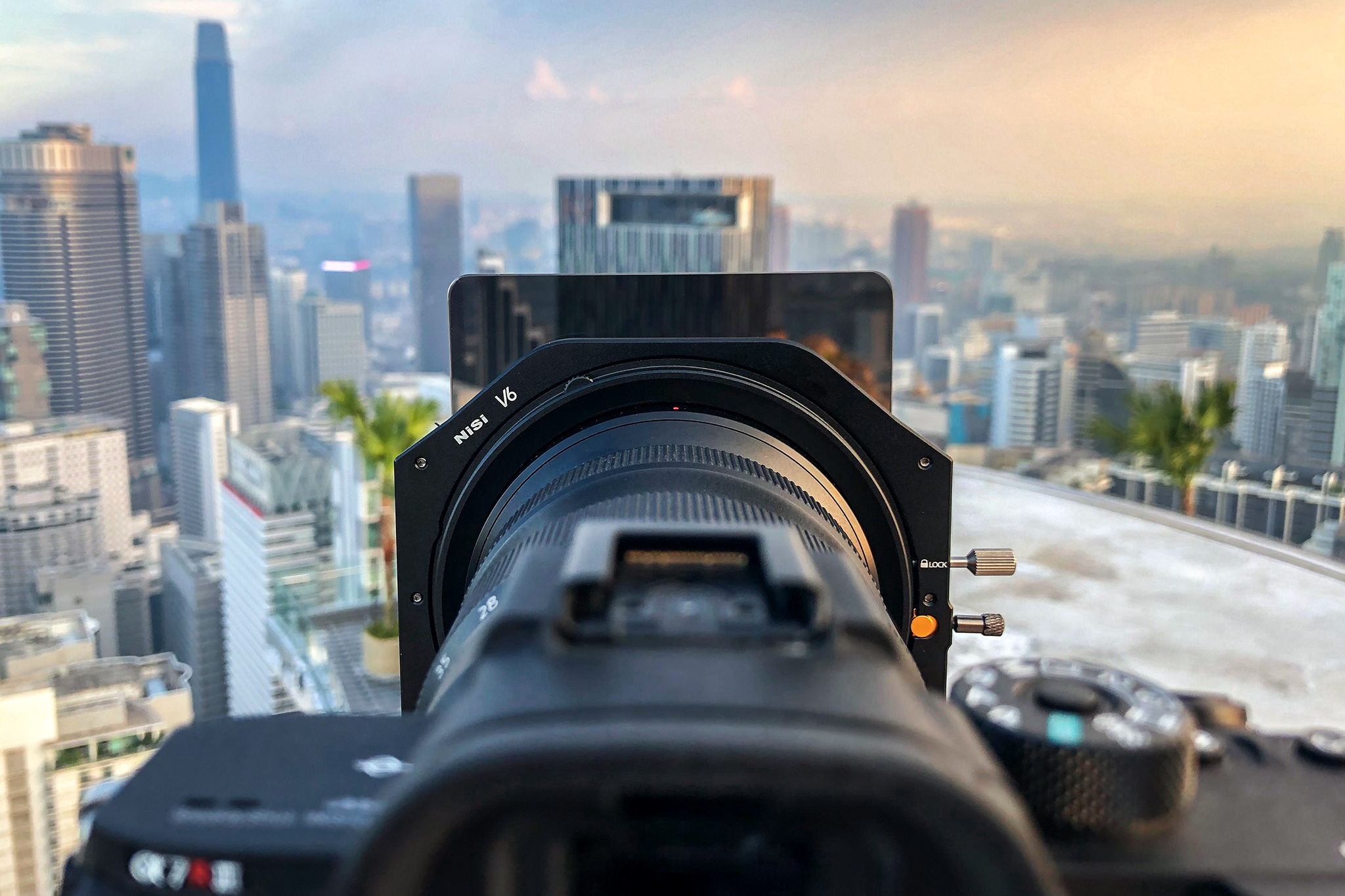
Simple and easy to use. NiSi has optimized the design of their 82mm main adapter ring with this V6 Filter Kit. This allows quick installation and removal of the CPL and the new slots on the V6 Holder are designed for smooth filter insertion. And the ease of CPL rotation is like nothing else on the market. Probably my favorite feature which can be found on both V5 Pro and V6.
Summary

Things I love:
- Comes with soft-pouch case, not the hard case anymore
- Comes with three additional adaptor rings
- Exceptional build, solid and more compact
- Includes a Landscape CPL
- Finger/thumb dials for rotation of CPL
- No vignetting (even at 16mm)
- Huge selection of ND and GND filters
Conclusion
If you’re looking for a high-quality filter system, both in terms of image quality and build quality, you really can’t look past the NiSi V6 Filter Holder system. And let’s be honest, aren’t we all looking for optimal quality, especially when it’s something we’re putting in front of our already incredibly expensive lenses?
Images Taken with The NiSi V6 Filter Holder Kit (And Various ND’s)
I made couple of videos about the new holder. Check out below. Feel free to subscribe to my Youtube channel!
We are at the end of another year, so here are my top 2018 photos.
A mesmerizing sunrise at Masjid Putra (Putra Mosque) which is the principal mosque of Putrajaya, Malaysia. I have been to this location many times and it is considered as one of my photography playgrounds.
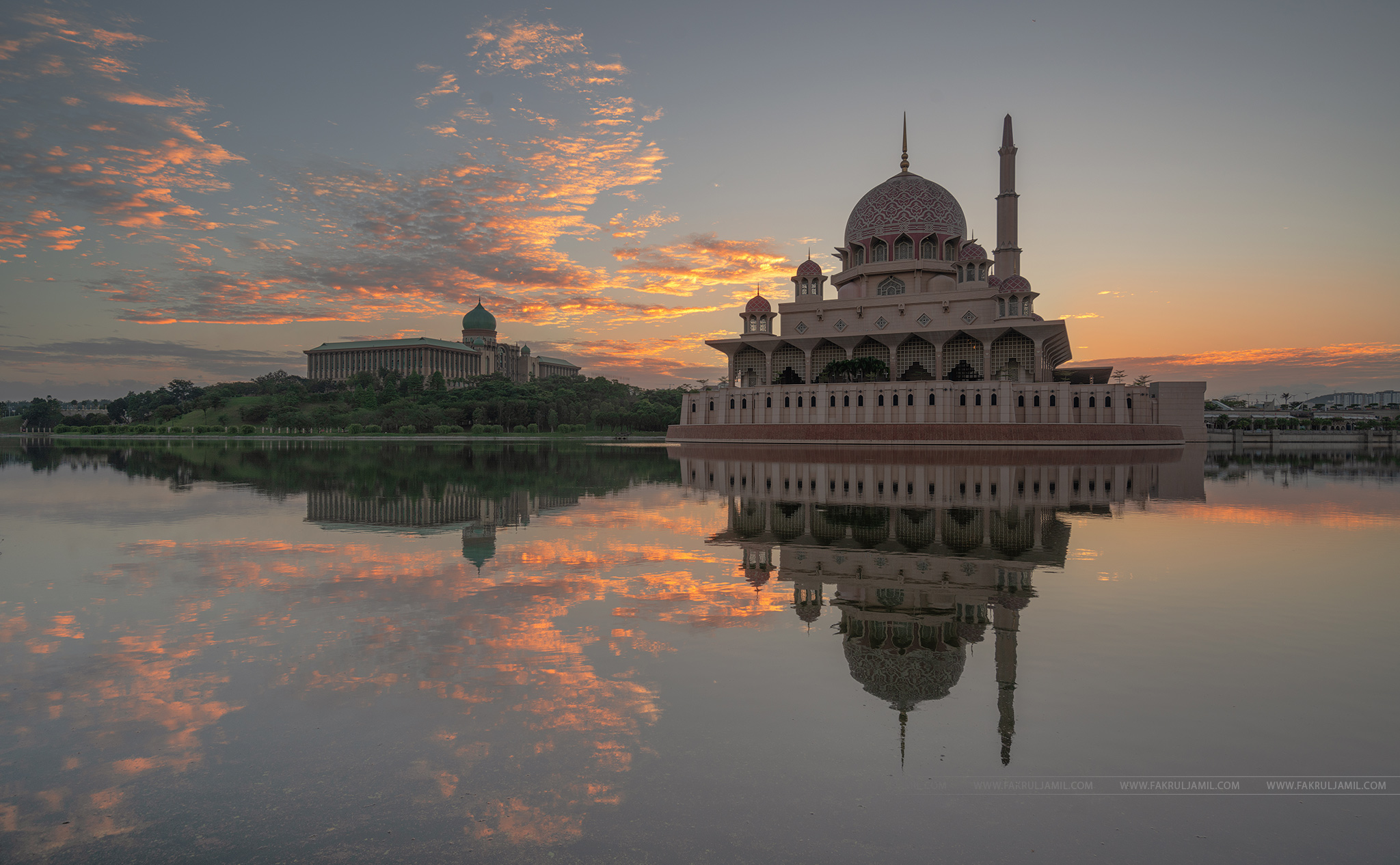
Sony A7RIII + Sony FE 16-35mm F/2.8 G Master + NiSi V5 Pro with Landscape CPL
Pantai Walakiri is a beach located in Watumbaka Village, East Nusa Tenggara, Indonesia. It is famous for its amusing sunset and serene nuance. The most distinct characteristic of this beach is the presence of mangroves that grow on the shore. These plants make the beach more beautiful and unique, which is perfect for photography. Moreover, the silhouette of those mangroves looks hypnotizing when the sunset appears!
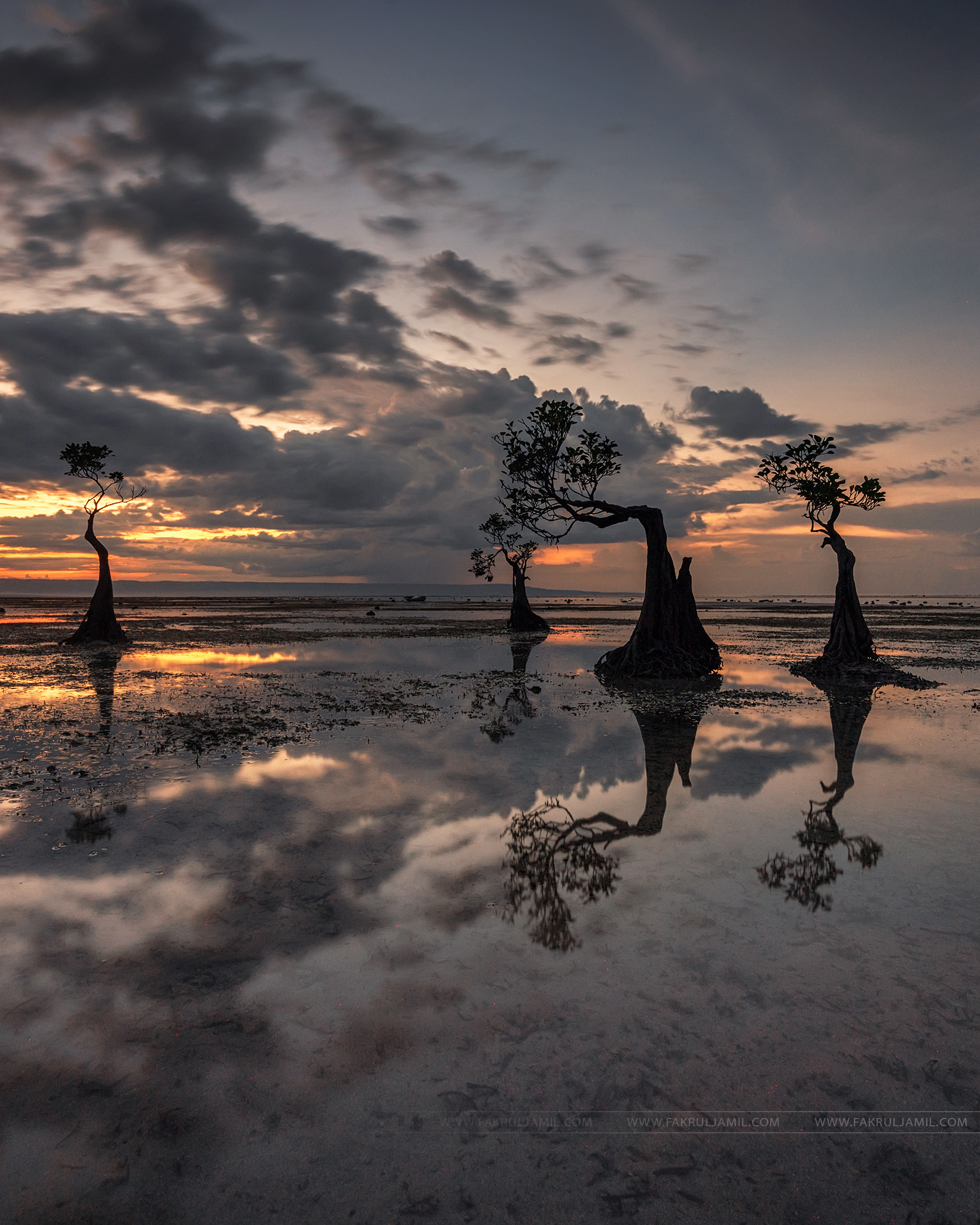
Sony A7RIII + Sony FE 16-35mm F/2.8 G Master + NiSi V5 Pro with Landscape CPL + 2 Stops GND
On the month of May, I got the chance to visit Stockholm in Sweden for work. The weather in Stockholm in May was really nice and pleasant. The best part is the daylight is longer during this month. Check out this sunset shot at almost 9pm!
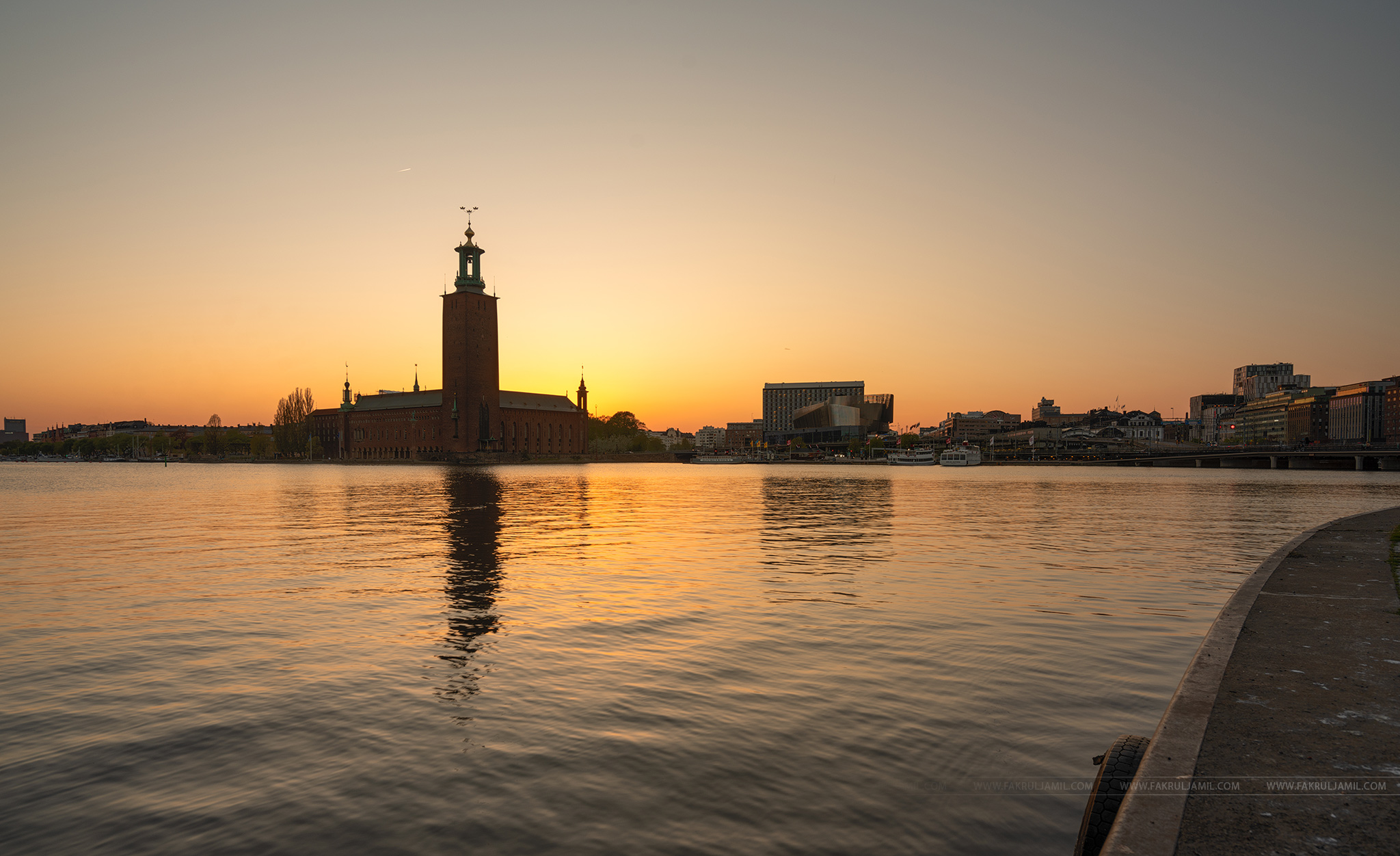
Sony A7RIII + Sony FE 16-35mm F/2.8 G Master
I did not have much time to shoot due to a fully packed schedule while I was there, but I glad I still managed to sneak out and take a few shots for my record.
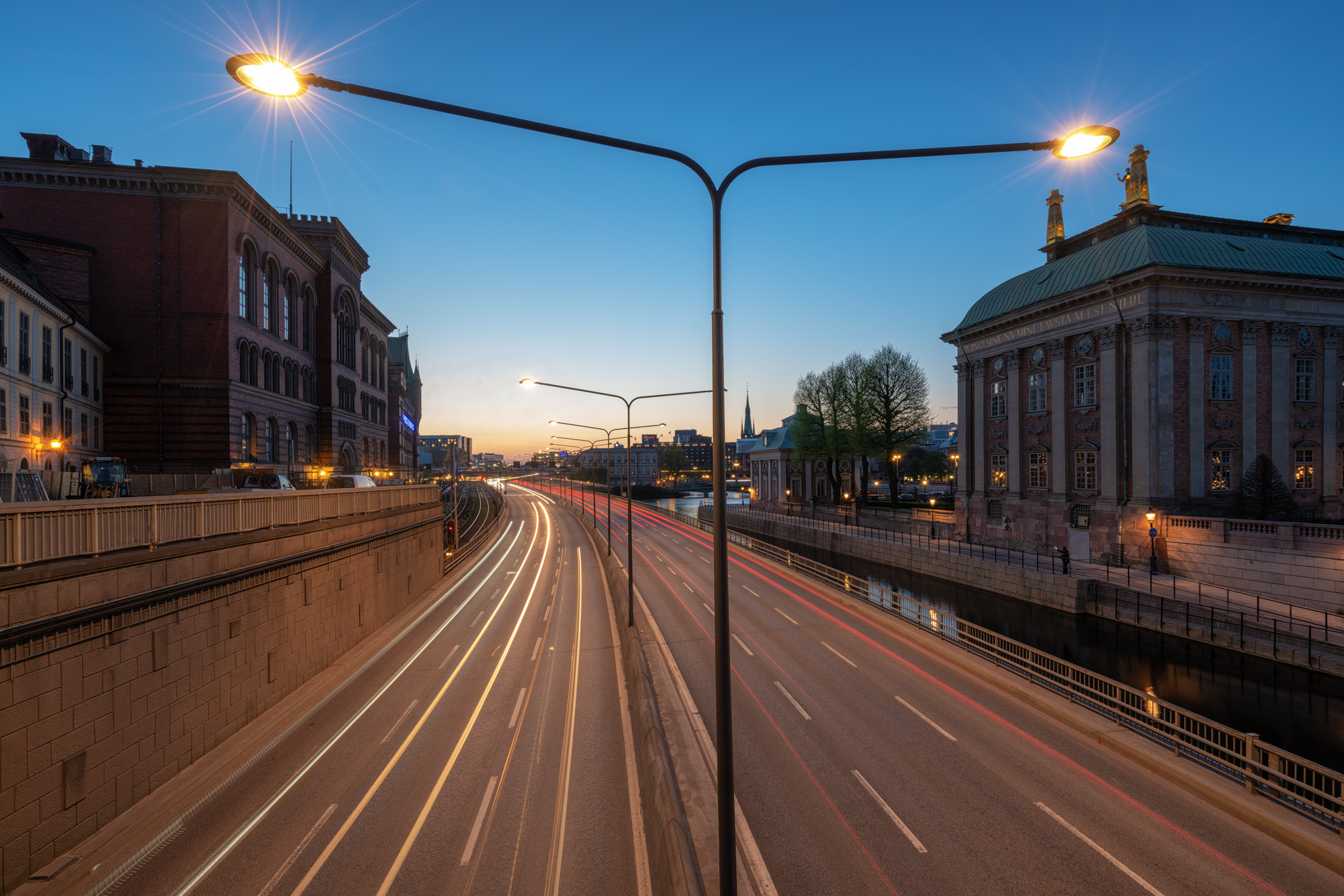
Sony A7RIII + Sony FE 16-35mm F/2.8 G Master
On a random weekend in June this year, I decided to go to this new spot (I never been before) which turns out not too far from where I live. It’s located at Tanjung Harapan near the North Port of Port Klang, which is around 30 minutes drive from Setia Alam. The sunset was brilliant on that day!
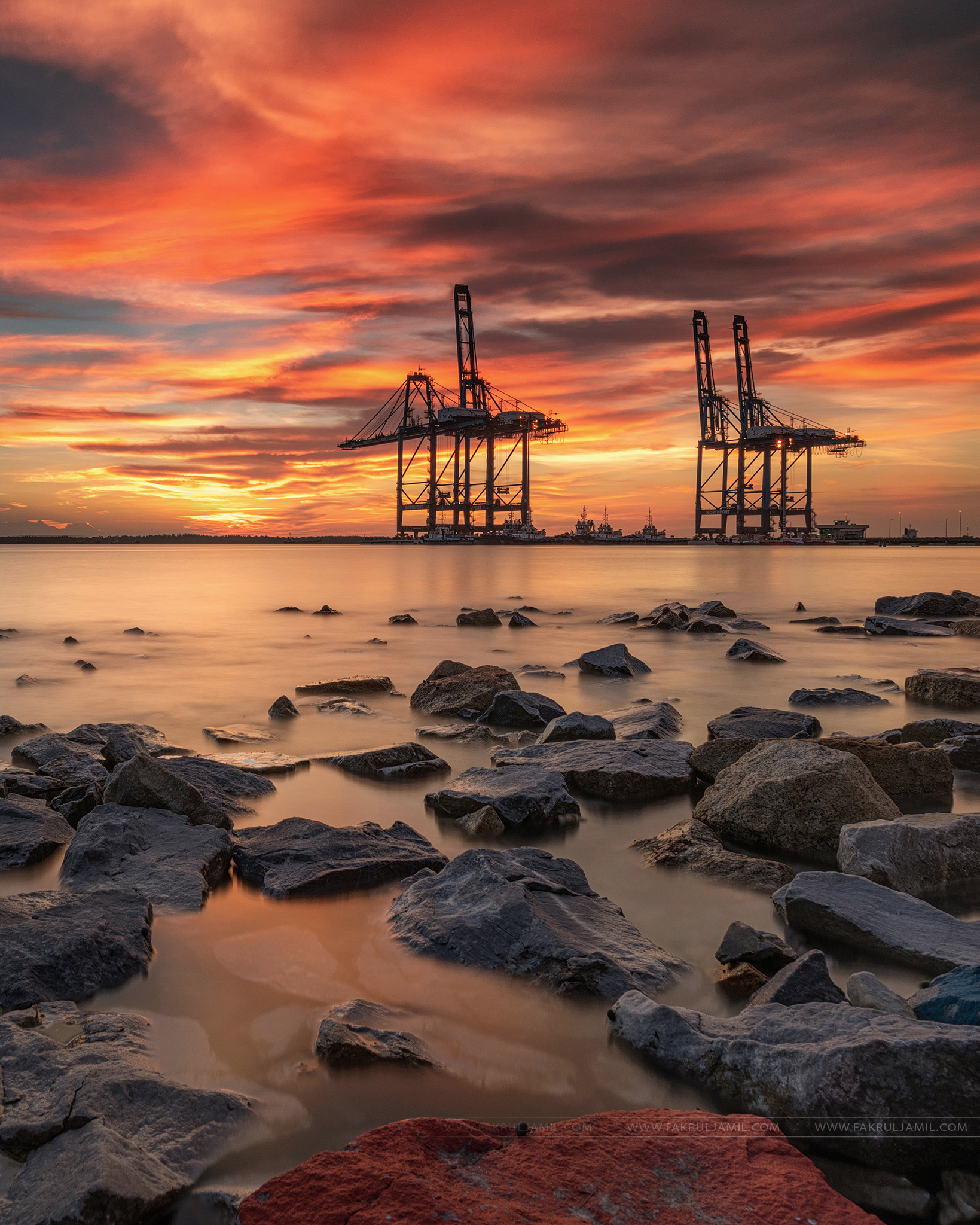
Sony A7RIII + Sony FE 16-35mm F/2.8 G Master + NiSi V5 Pro + 3 Stops GND Soft + NiSi 10 Stops ND
In August, I was invited by a good friend of mine, Abang Zakies to join his trip to Sabah for some photography getaway. It was a short 3-days 2-night trip but a good catch up session with him and another friend. The photo below is taken in Simpang Mengayau, a beautiful location for photography activities. The optical phenomenon of sun halo attracts my attention here.
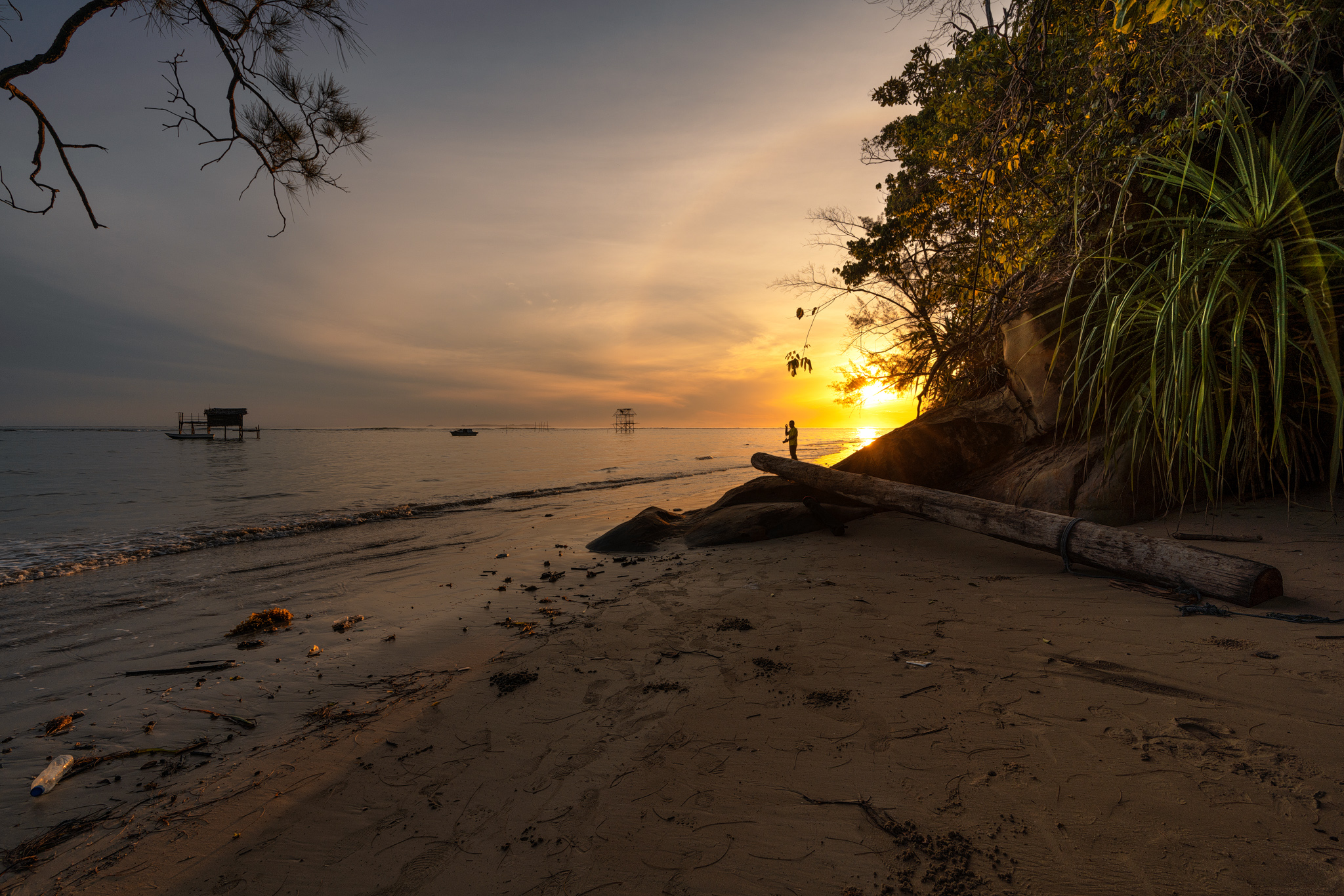
Sony A7RIII + Sony FE 16-35mm F/2.8 G Master
Our next photo stops were this stunning river of Melangkap near Kota Belud with the majestic Mount Kinabalu in the backdrop.
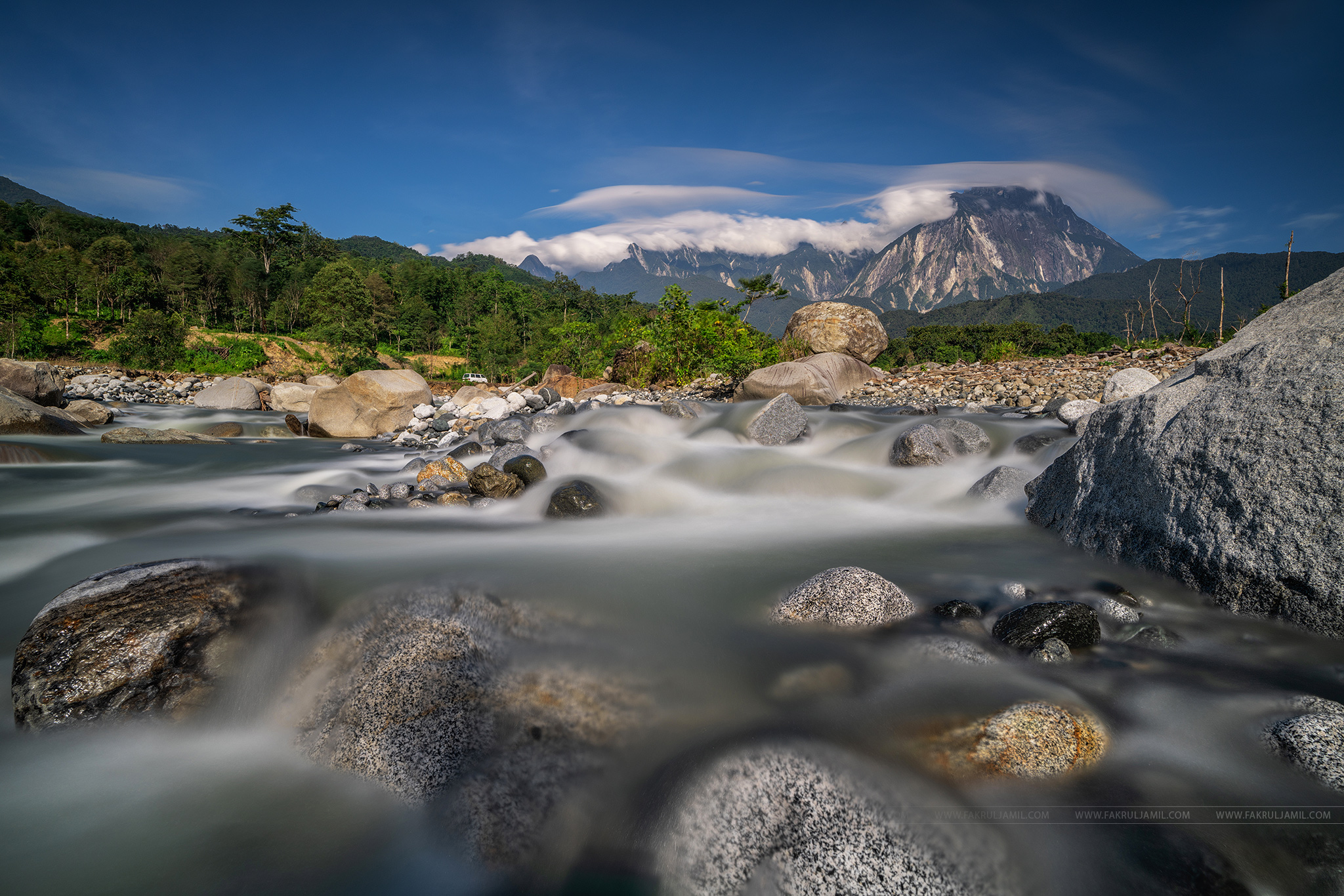
Sony A7RIII + Sony FE 16-35mm F/2.8 G Master + NiSi V5 Pro + 3 Stops GND Soft + NiSi 10 Stops ND
ODEC UMS is our final photo stop for sunset before flying back to KL. This is a classic location where my first visit was back in April 2012. The sunset was fine and the tide condition is great for long exposure photography.
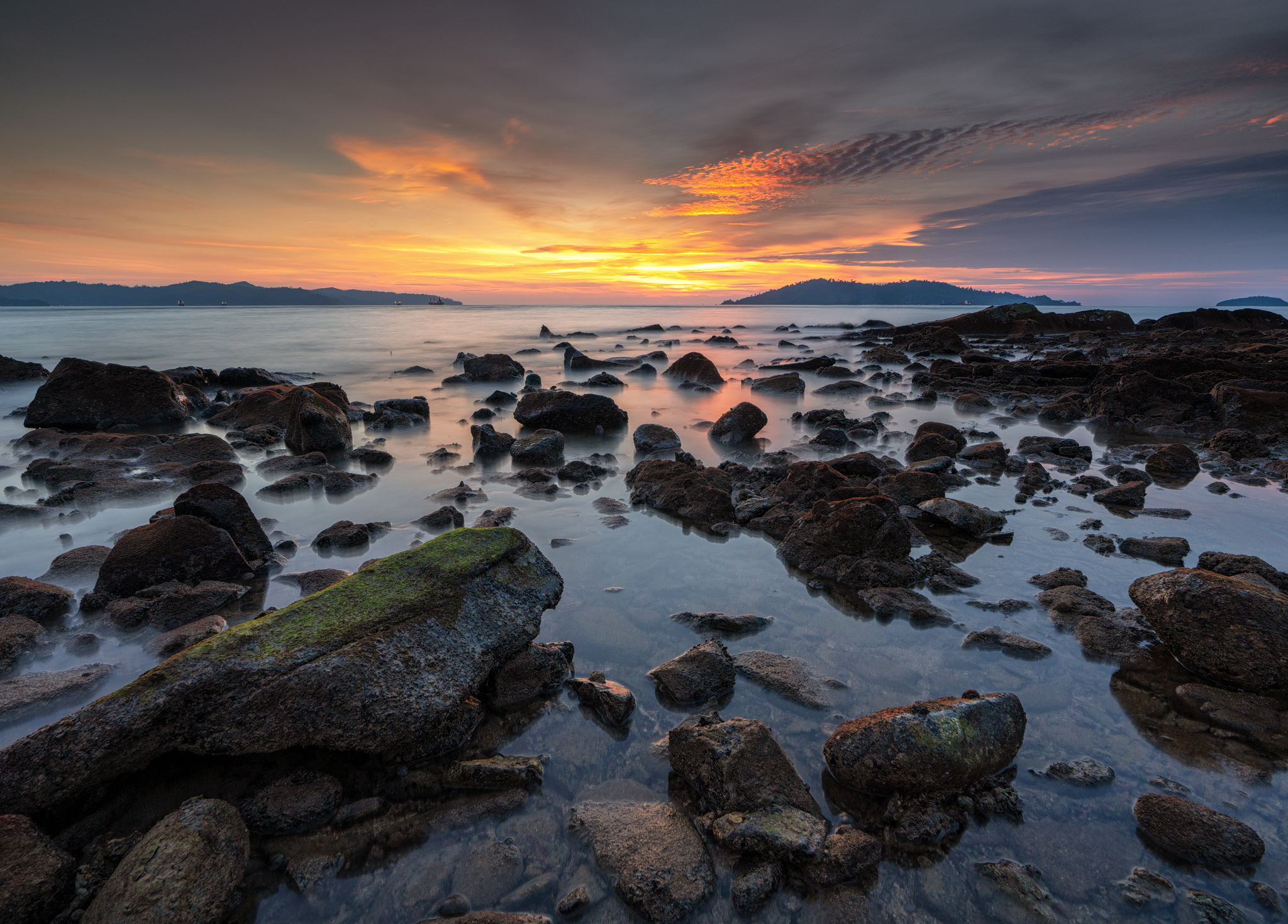
Sony A7RIII + Sony FE 16-35mm F/2.8 G Master + NiSi V5 Pro + 3 Stops GND Soft
In September, I visited Mt Bromo for my second time in hoping to catch another sea of clouds but to no avail.
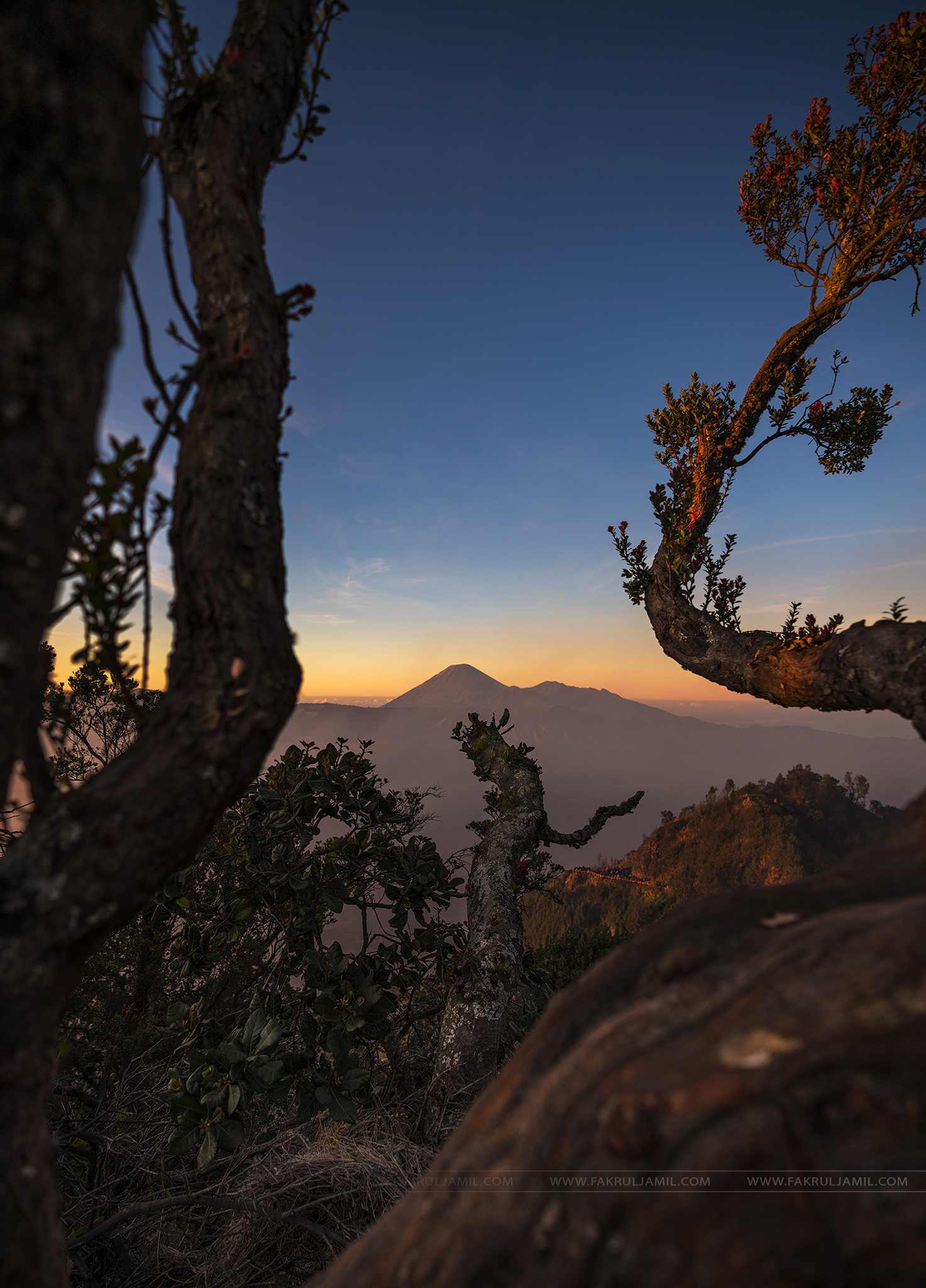
Sony A7RIII + Sony FE 16-35mm F/2.8 G Master
However, when the nightfall, the Milky Way was not disappointing. During September, they can be seen right after the sunset and you can shoot them until midnight.
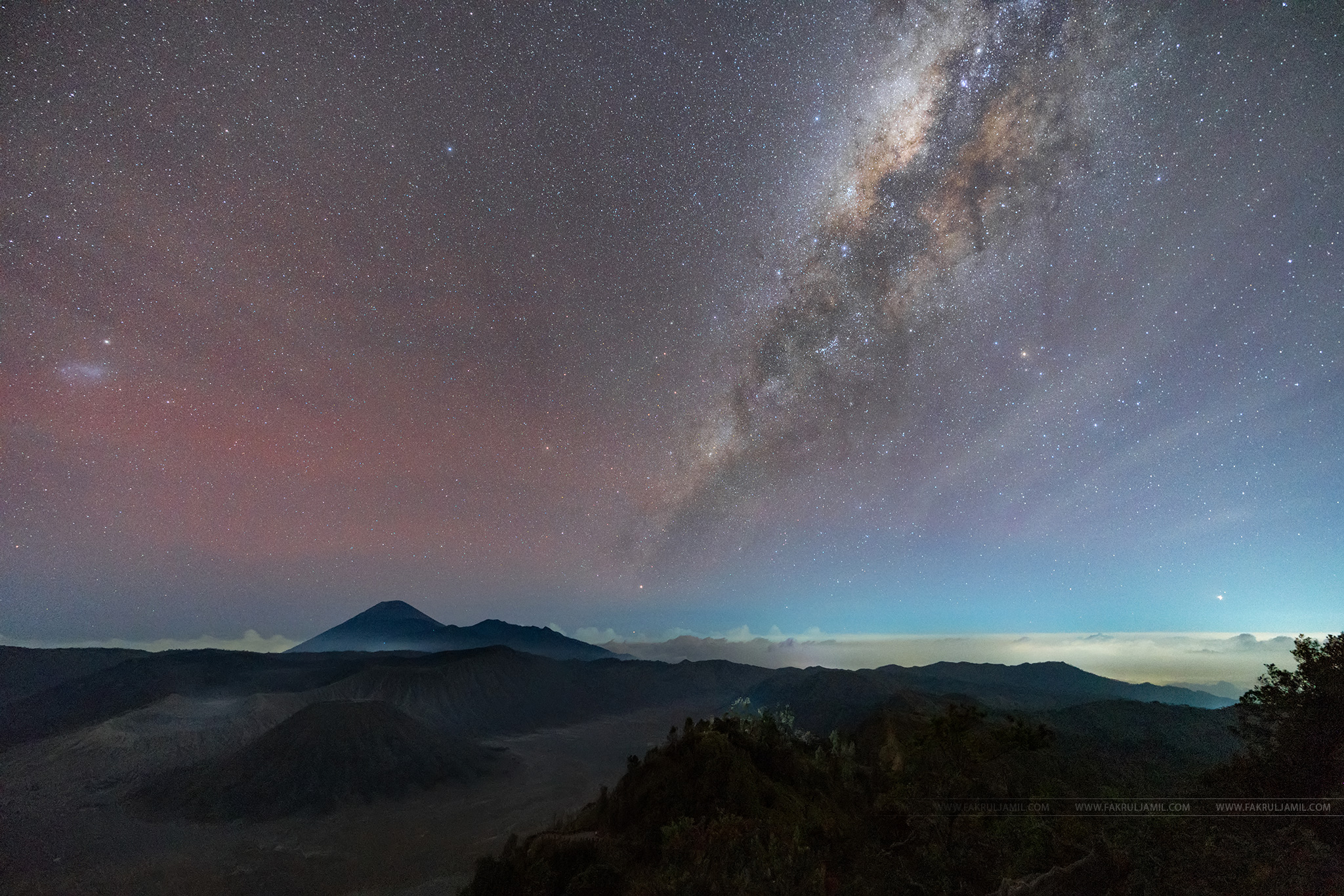
Sony A7RIII + Sony FE 16-35mm F/2.8 G Master
A naked yet colorful sunrise near Seruni viewpoint without the sea of clouds.
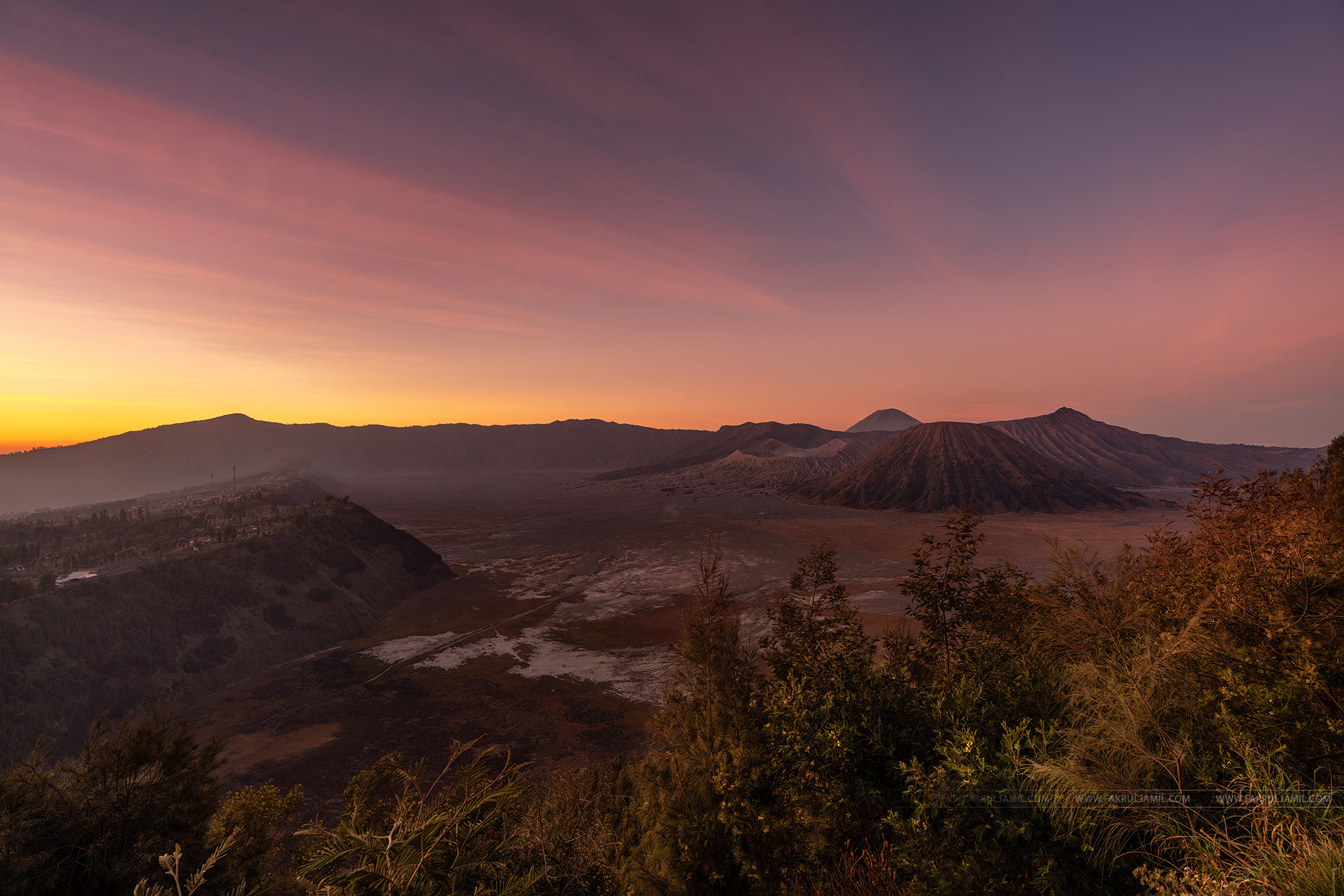
Sony A7RIII + Sony FE 16-35mm F/2.8 G Master
The breathtaking Madakaripura waterfalls near Mt Bromo. You would want to visit this location super early in the morning to beat the massive tourist.

Sony A7RIII + Sony FE 16-35mm F/2.8 G Master + NiSi V5 Pro Landscape CPL + NiSi 10 Stops ND
Burning sunrise when least expected at Masjid Besi, Putrajaya, Malaysia. I’ve been to this spot many many times, but only managed to get such a great light a few times.
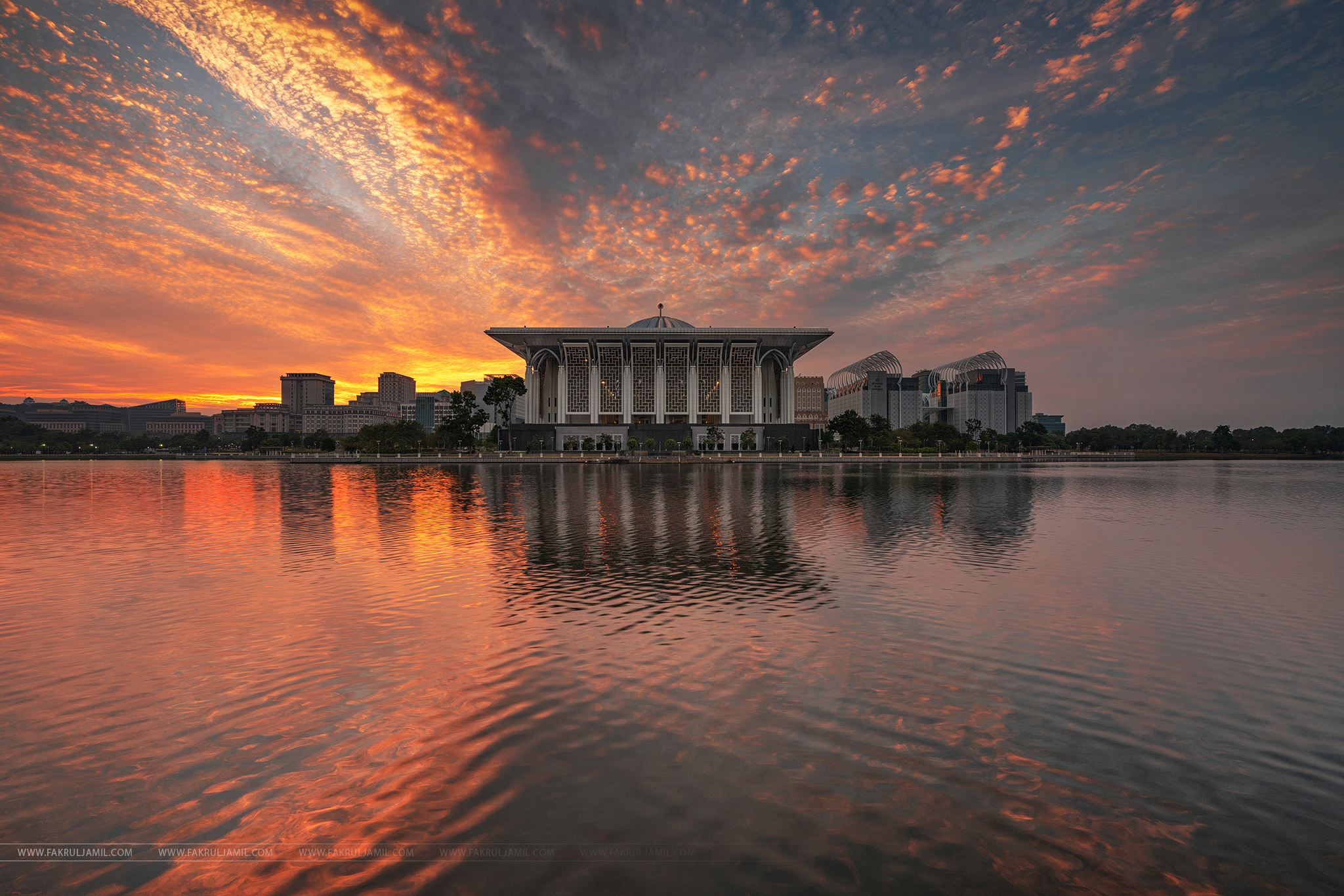
Sony A7RIII + Sony FE 16-35mm F/2.8 G Master + Nisi V5 Pro with 3 stops GND
I am blessed to have such amazing partners, friends & followers. Thank you to Sony Malaysia, NiSi Filters, F-Stop Gear & Lee Photo Sdn Bhd. Thank you to my fellow followers for the endless support and love. Here’s a toss to more adventures, photography trips and workshop next year! Happy holidays and Happy New Year!
So I stumbled upon this majestic waterfalls while I was surfing the internet called Tumpak Sewu, located in Lumajang Indonesia. I was blown away with it and I knew I had to take a trip up there. After a short research, I packed my camera and ended up on a plane with a friend heading towards Surabaya.
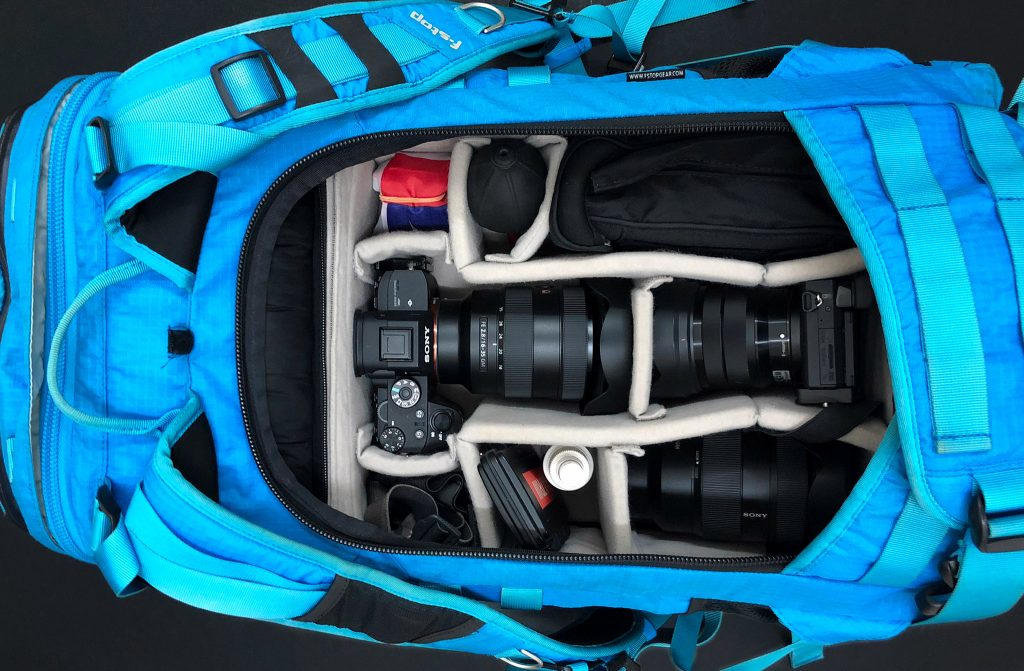
The trip commences from 8th – 12th September 2018. We took a Lion Air flight JT164 from Kuala Lumpur International Airport and around 2 hours later, we arrived at Juanda International Airport which is the third busiest airport in Indonesia. We were greeted by our driver and then took off straight to Lumajang which is a 6 hours drive from Surabaya. A tip worthy to take note – best to arrive Surabaya in the evening if you plan to head directly towards Lumajang due to lesser traffic in the night and you can sleep during the long drive. We arrive at our accommodation around 1 am and after a quick unpacking, we retired the night. For your information, there is no resort or hotel in the area due to the location is not developed with tourism just yet. We slept in the local villagers’ place (paid).
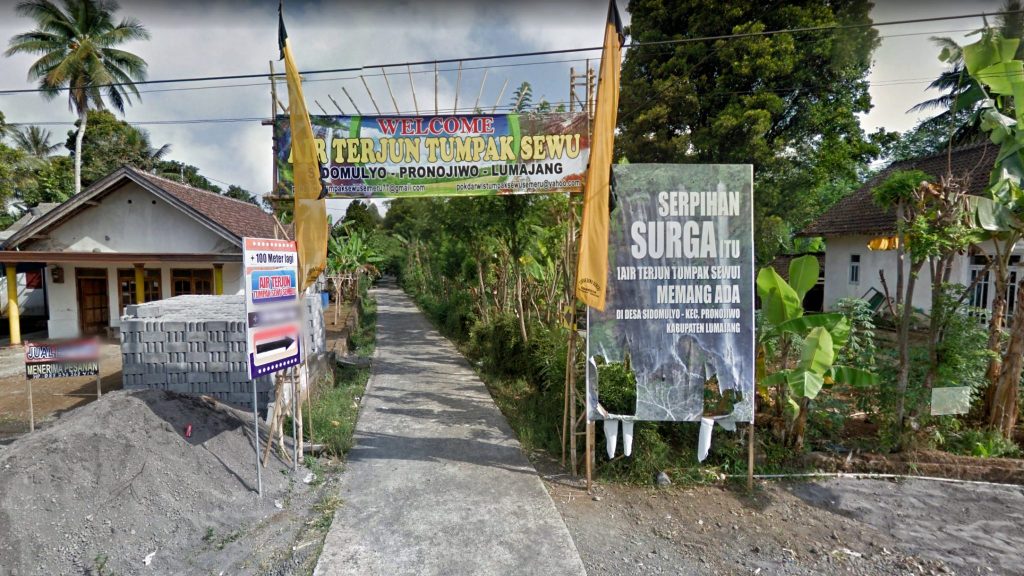
Tumpak Sewu Entrance
The next morning, we tried to enter the waterfall as earliest as we can. I’m not sure about the exact price but the entrance ticket shall cost you around IDR 10k /pax. From the entrance, the descend started right away. The trekking path is quite an exhausting one because it was very steep.
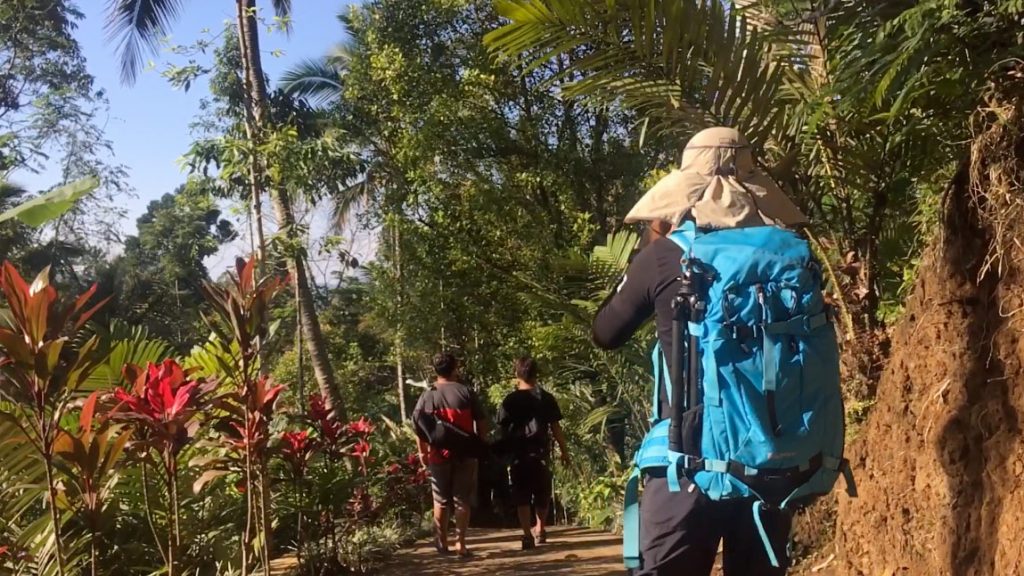
For most of the trails, you will be walking on a small-narrow bamboo staircase and sometimes you need to pass some slippery wet stones and crossing several small rivers along the way. You need to be very careful and ensure that you have proper trekking sandals or shoes for your own safety. Depending on your speed, the descent would take around 30-45 minutes and perhaps it will be doubled when you ascend.
Once you reached the base, it is another few hundred meters and you will reach the majestic falls. These greenies complex really worth the effort going down!
Unfortunately, the condition wasn’t that good. The lighting was uneven while we were there to shoot. The sun is already too high but not high enough to light the whole area causing part of the area to be underexposed. I guess this is a good reason for me to back again in future.

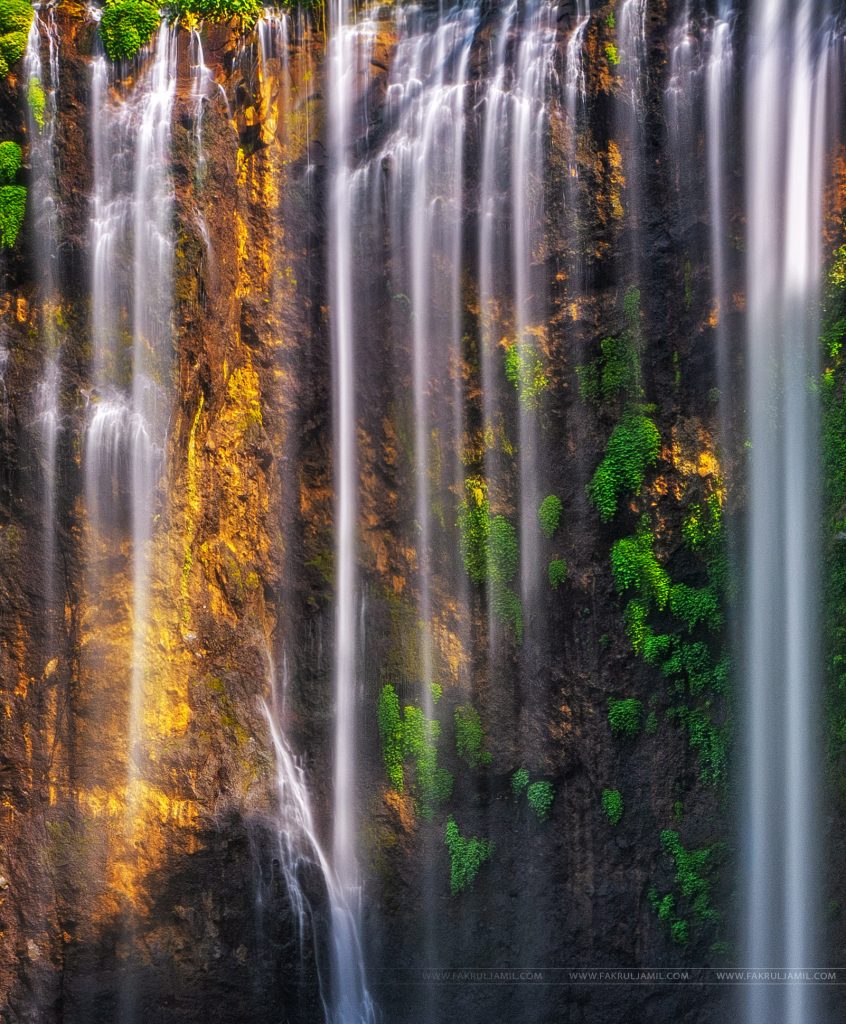
After spending almost 2 hours at Tumpak Sewu, we started our ascent and it took us almost an hour to reach the car park. We returned to our accommodation where our host had prepared a nice lunch for us. We then doze off for a couple of hours before proceeding to our next waterfall which is Air Terjun Kabut Pelangi. By this time, me and Faisal are having a crucial muscle cramp on both of our legs. It’s another descend to get to the Kabut Pelangi waterfall and this time the distance felt farther. Anyhow, we made it to fall. The 100m+ Kabut Pelangi is an incredible sight. The force it generates when it hits the pool below is incredible and this is definitely not a place you want to go swimming!
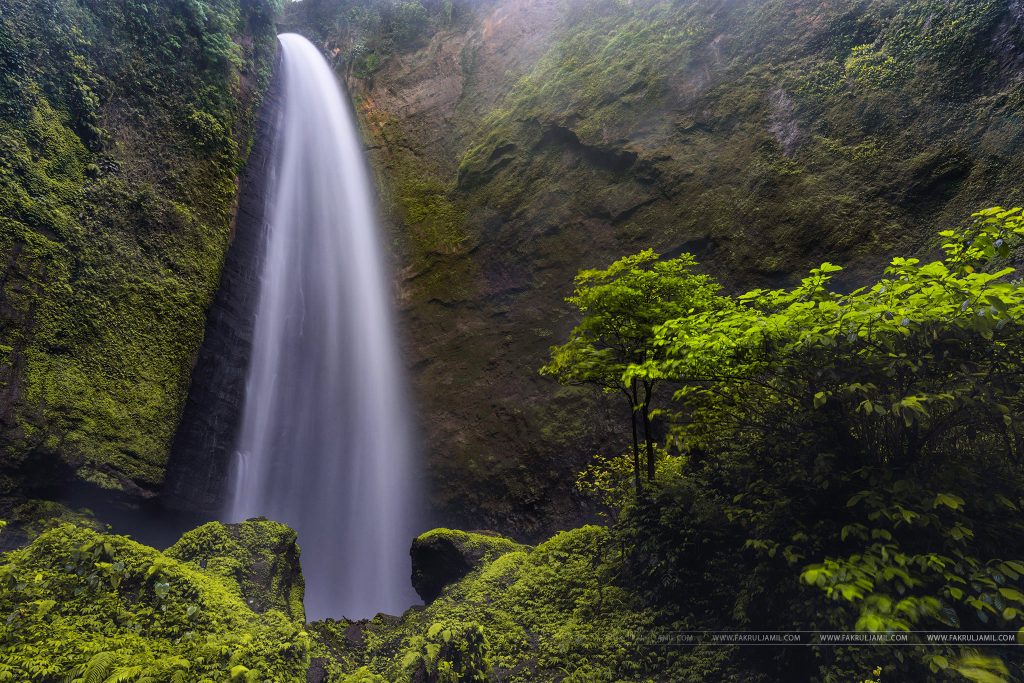
Air Terjun Kabut Pelangi
A short trip of 4 days and 3 nights to Bromo Tengger Semeru National park, particularly to photograph the majestic Mount Bromo, an active volcano in the part of Tengger massif, East Java, Indonesia. It was an unplanned trip, a quick chat with Azmi, a friend of mine, then we realized there is an airfare promotion to this location. But we realized that we had to sacrifice the milky way due to full-moon period. Hey, that’s a reason to go back again yeah?
23/3 – Wednesday evening : Kuala Lumpur International Airport 2 (KLIA2). Meeting up with the team. From left, Azmi, Jemang, Pak Zahar & yours truly.

While waiting for the departure, a close look of the FE 24-70 f/2.8 G-Master paired with Sony A7SM2. Ain’t she a beauty?

24/4 – Thursday morning : Our flight delayed for over an hour so we arrived in Surabaya airport around 1am. We met Pak Irsam, our local guide for this trip. It was then a long 4-5 hours drive from Surabaya city to Bromo Tengger Semeru National park. Our eyes couldn’t take it anymore so everyone fell asleep except for Pak Irsam himself because he got to drive.
A few hours later, we arrived to the national park just at around sunrise. We missed the blue hour but we were greeted with beautiful sea of clouds! Here’s my Sony A7RM2 and the FE 24-70 f2/.8 GM in action. The other camera was running on timelapse of the volcano mountains.

We wrapped our shooting at this first location with a group-photo-selfie and a cup of teh halia (ginger tea).
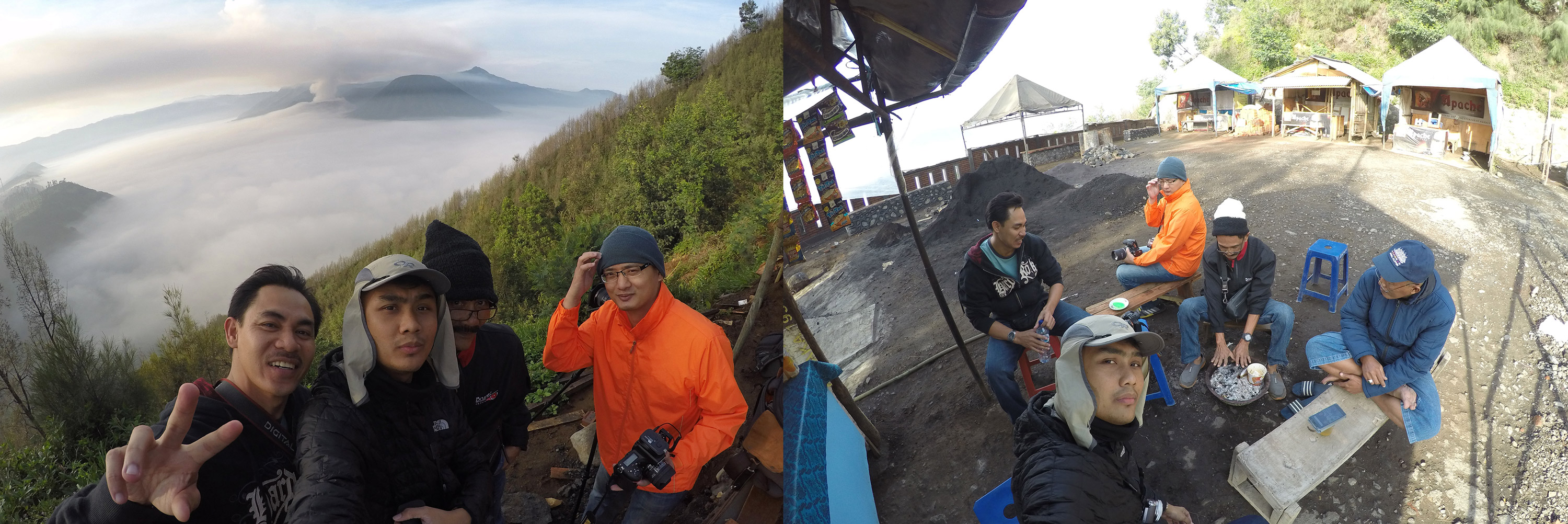
The remaining of sunrise colours that morning. The blanket of clouds partially covering Cemoro Lawang. Cemoro Lawang is a very small hamlet north-east of Mount Bromo (East Java), Indonesia with the altitude of 2,217 meters above sea level.This hamlet is a part of Ngadisari Village, Sukapura in the Probolinggo Regency.
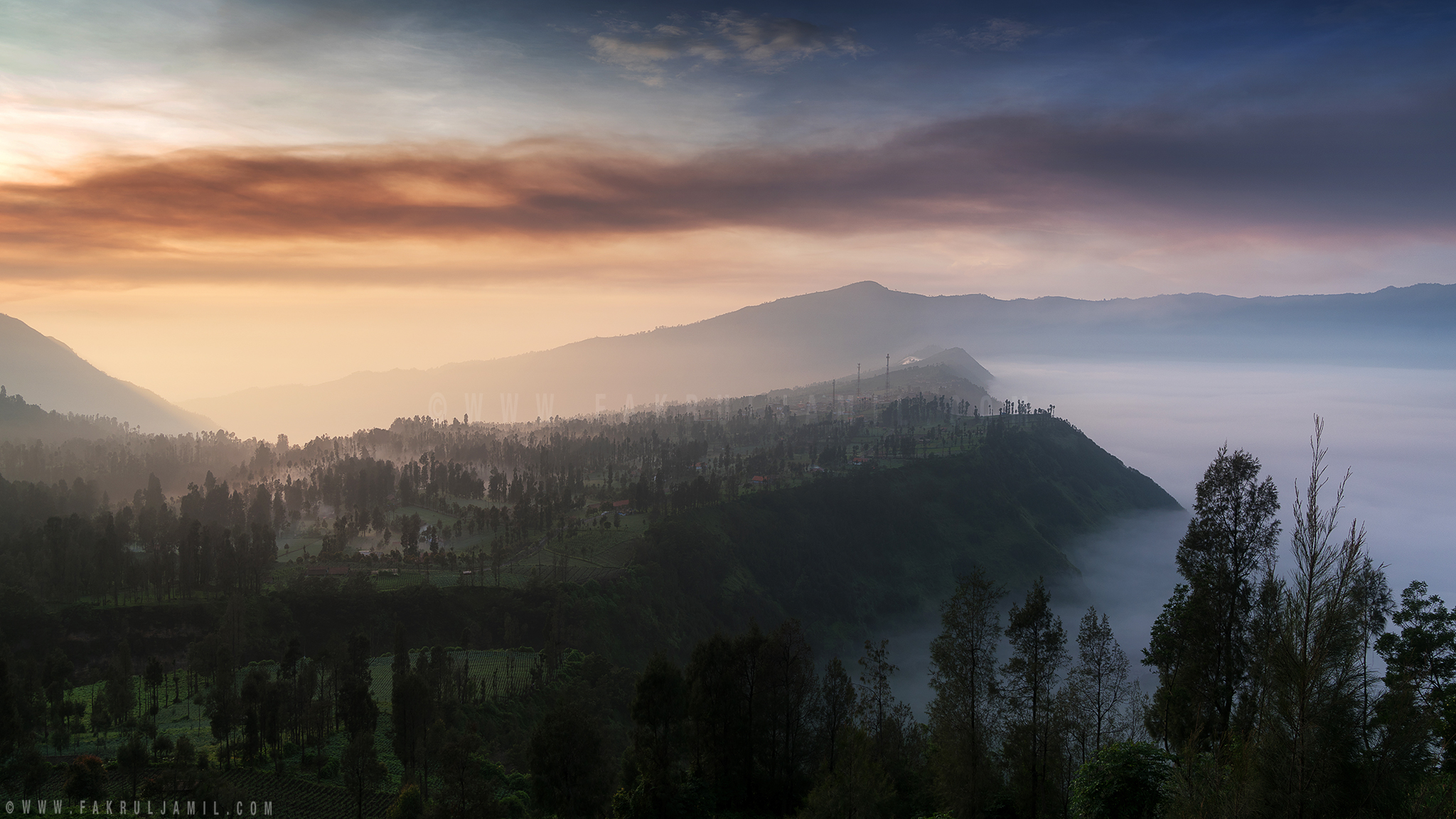
Frame-grab from my timelapse sequence. Absolutely magnificent view when the stormy clouds came into the scene.

Our next location is the crater of Mt. Bromo. To be honest, I didn’t expect a horse ride which was arranged by Pak Irsam. It’s around 1 km distance from the car park up to the crater so a horse ride definitely ease the journey. Photo below is a courtesy from Pak Zahar’s camera.
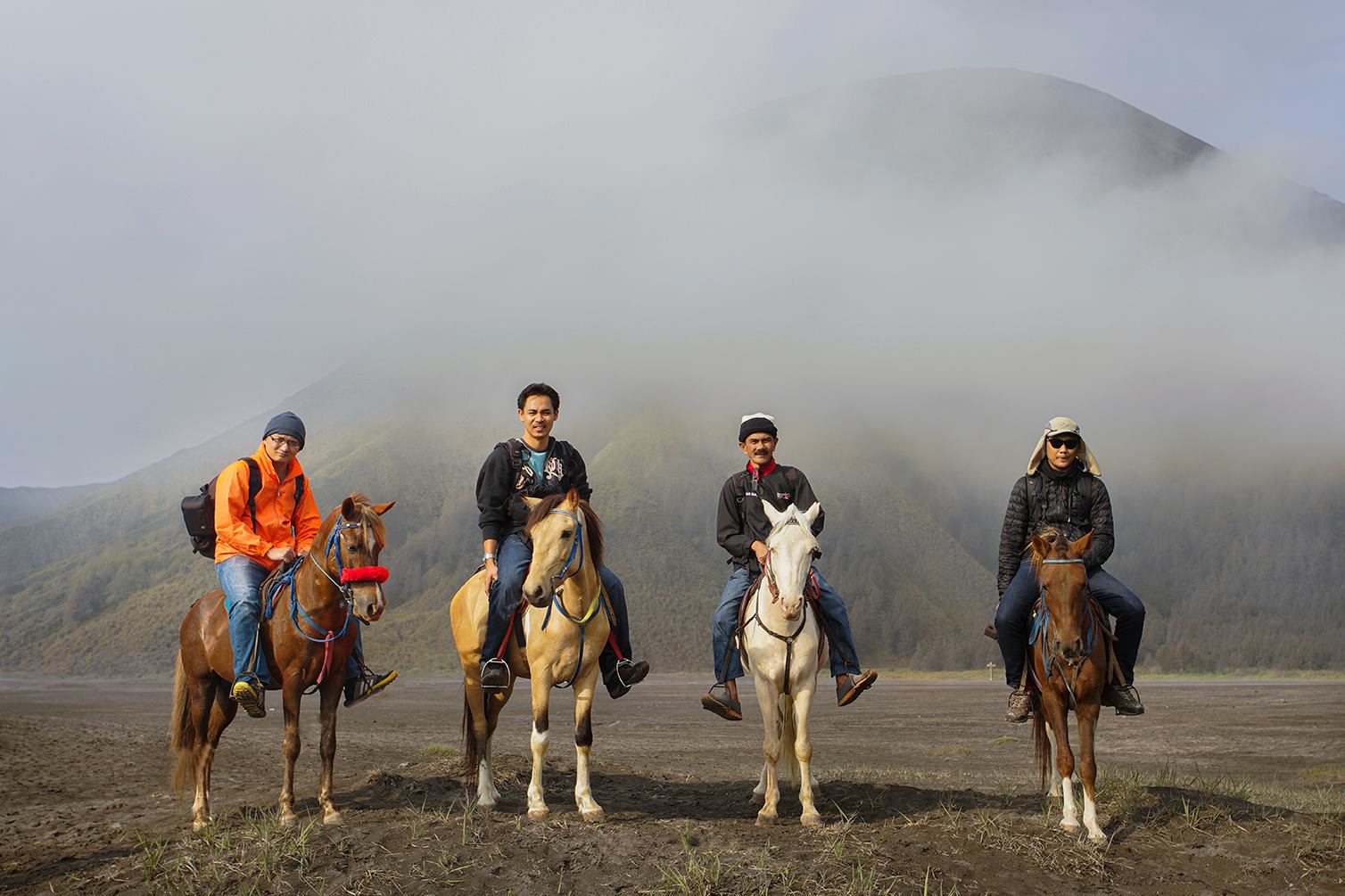
Anyway, I thought the horse ride would take us all the way up to the crater, but I was wrong. The ride stops at the stairways then we had to climb it ourself and it was a pretty steep climb. Had to stop few times to catch some breath!
Here’s the stairways and abam Jemang at one of the many pit-stop we had to make before reaching the peak.
The crater of Mt. Bromo and its constantly belches white sulfurous smoke.
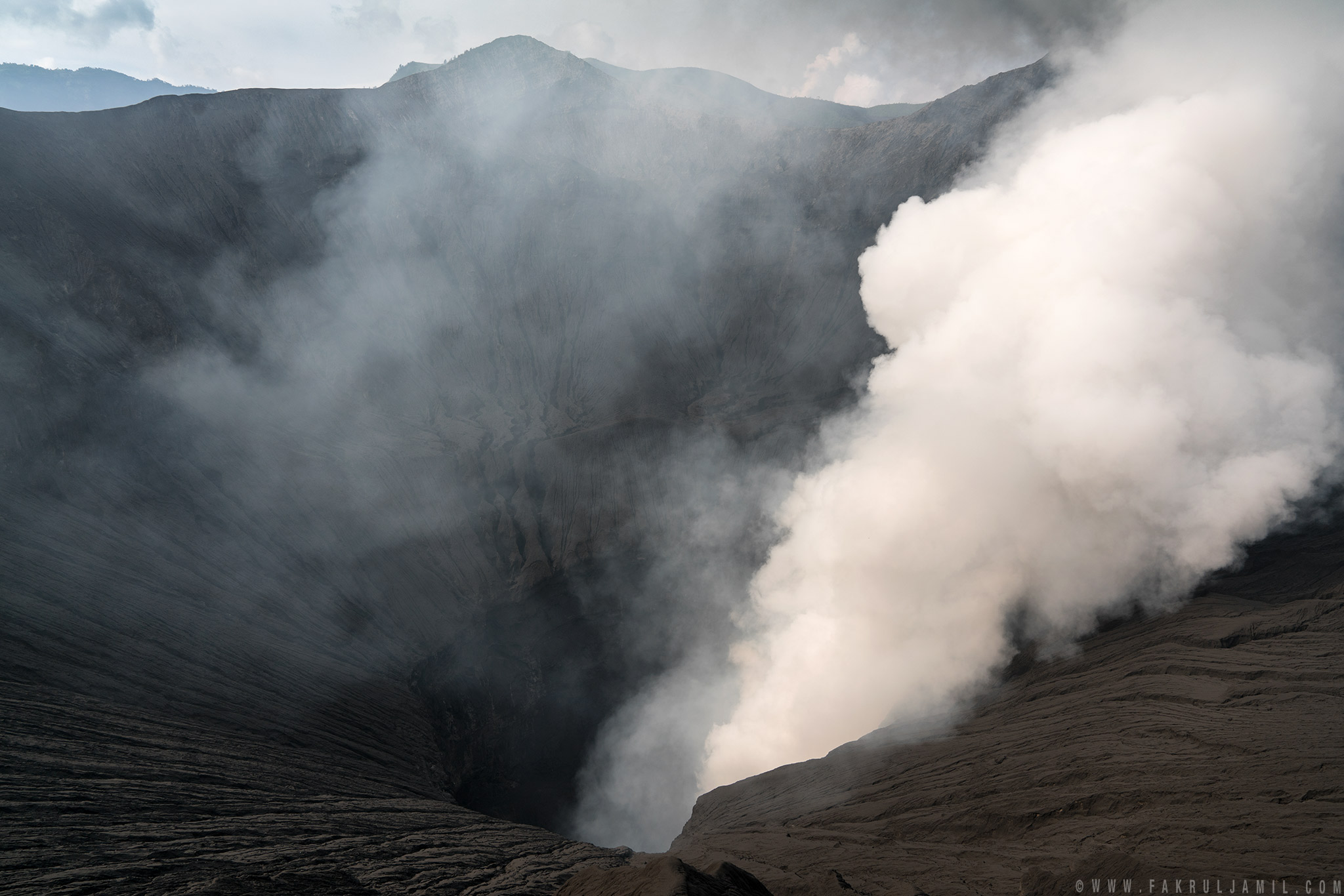
A quick selfie with Jemang and Azmi. Too bad Pak Zahar didn’t make it to the top because he could not stand the heavy sulfur smoke.
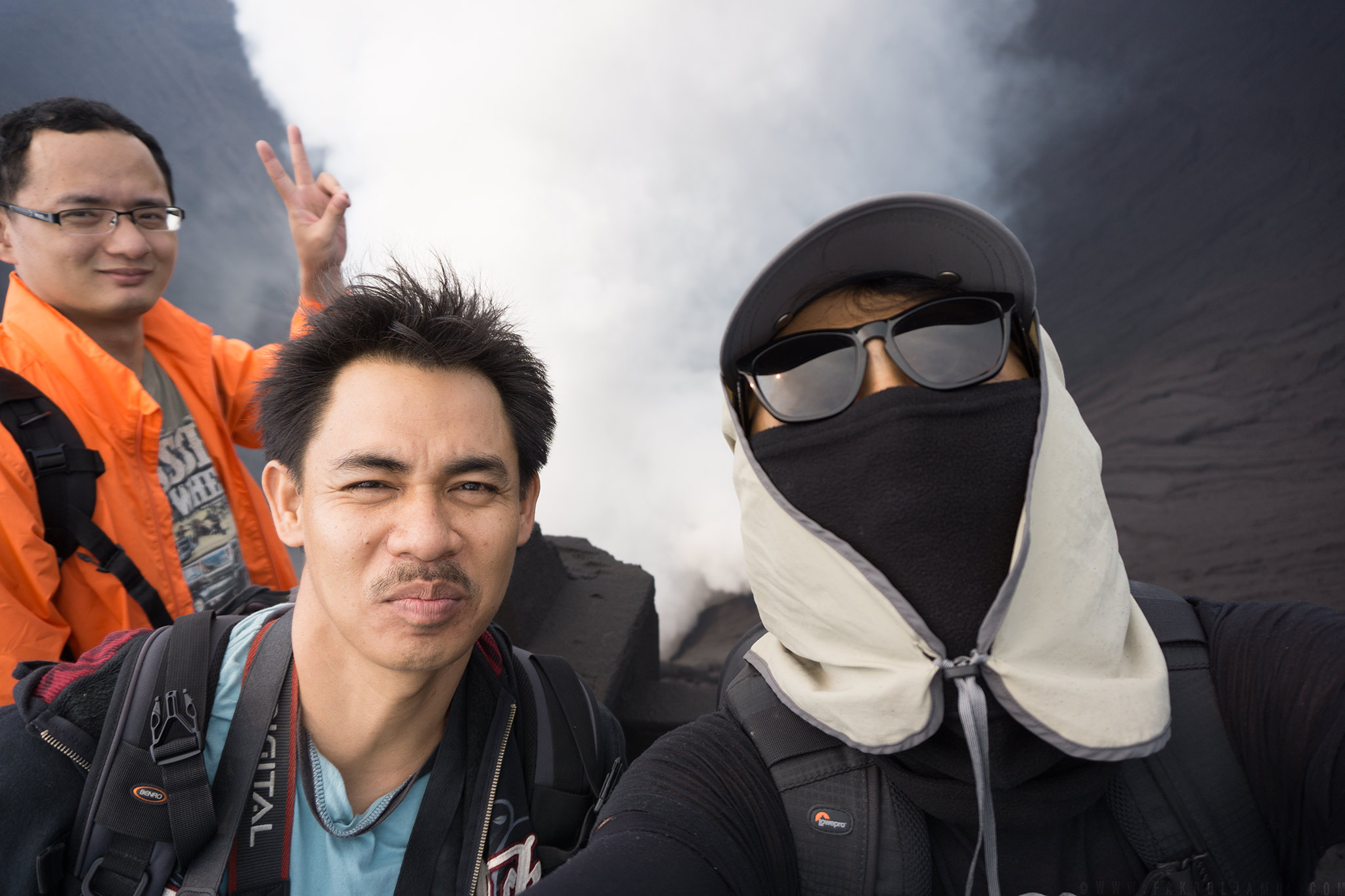
24/3 – Thursday morning : Our second day starts as early as 2.00am. Our next location is Penanjakan 1, which happens to be the most famous viewpoint in the national park. It’s located approximately about 1 hour drive but its not your ordinary drive. It was a really bumpy drive even on a 4×4 vehicle. Not recommended for those who suffers back-pain etc. We reached Penanjakan 1 around 3.00am and the parking area is already looks like a night market. The place is filled with lots of tourist!
So after got dropped by our driver, we then hike up to the viewpoint which located around 500 meters from the parking area. Pak Irsam showed us where to set our tripod and luckily the front seat is not yet taken. We then setup all our gears and waited patiently for the sunrise. It gets pretty cold sometimes but thanks to down jacket and a neck-warmer, I’m all covered.
Here’s a photo taken around 3.30am. As you can see, the light trails down in the caldera is from all the 4×4 vehicle, transporting tourist from Ngadisari village to Penanjakan 1. Better be early to grab the front seat!
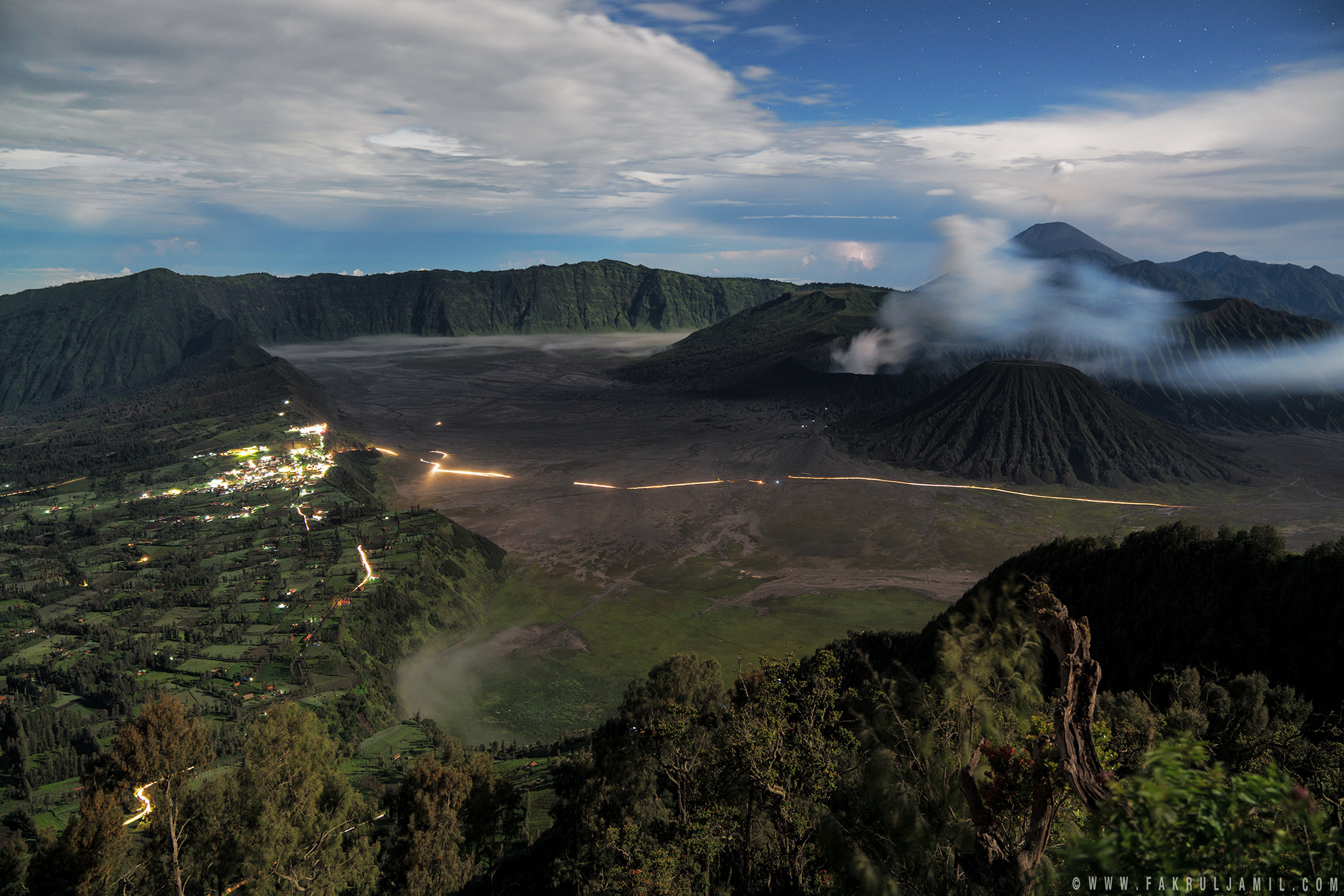
After few hours waiting and shivering in the cold weather, the sun is about to rise. Here’s a panorama of the blue hour taken with Sony A7RM2 + FE 24-70 f/2.8 GM lens. Click on the photo to view in large.
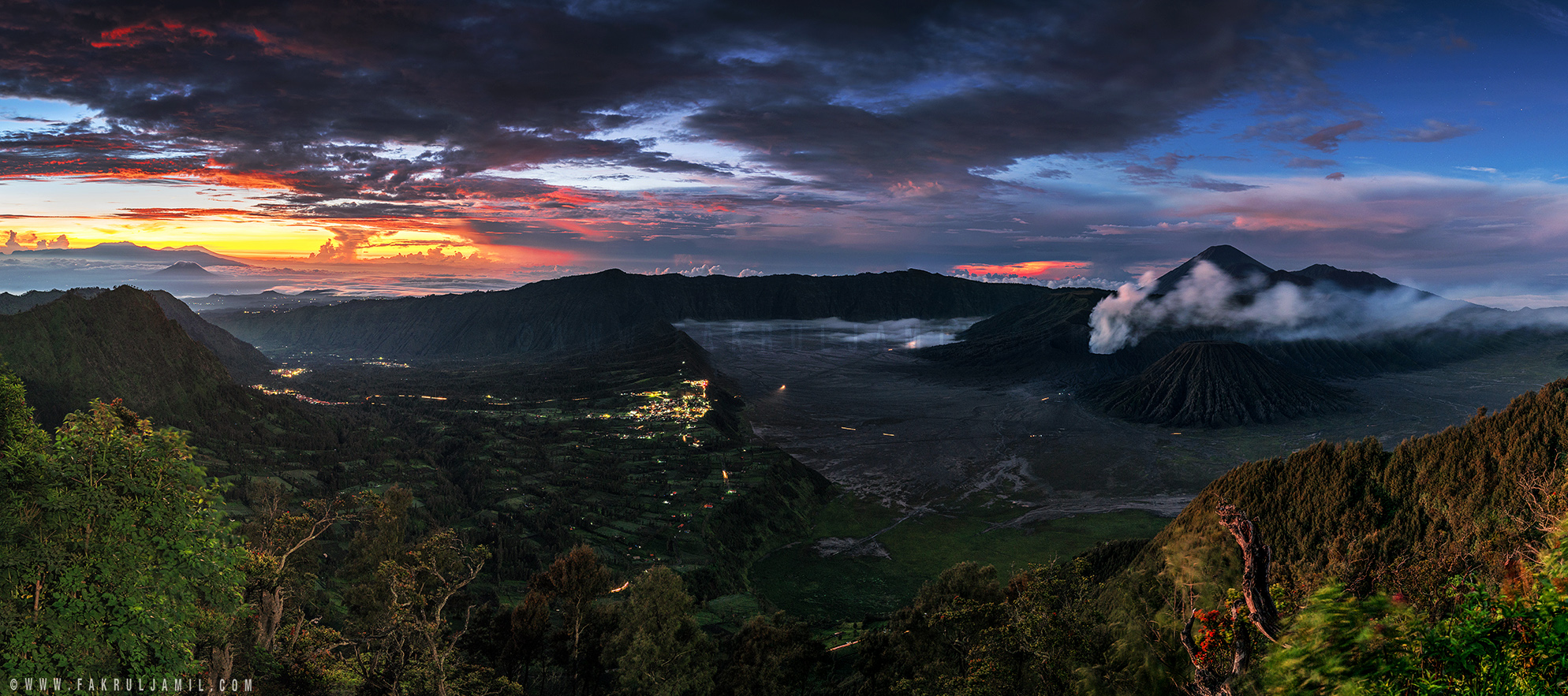
When I saw the blue hour, I thought to myself, this could be a pretty amazing sunrise and as the sun progressed higher, the mesmerizing colours starts to appear. We, landscape photographers express this moment as “the magic hour”. Check out behind the scenes photo below taken with Sony A5100.
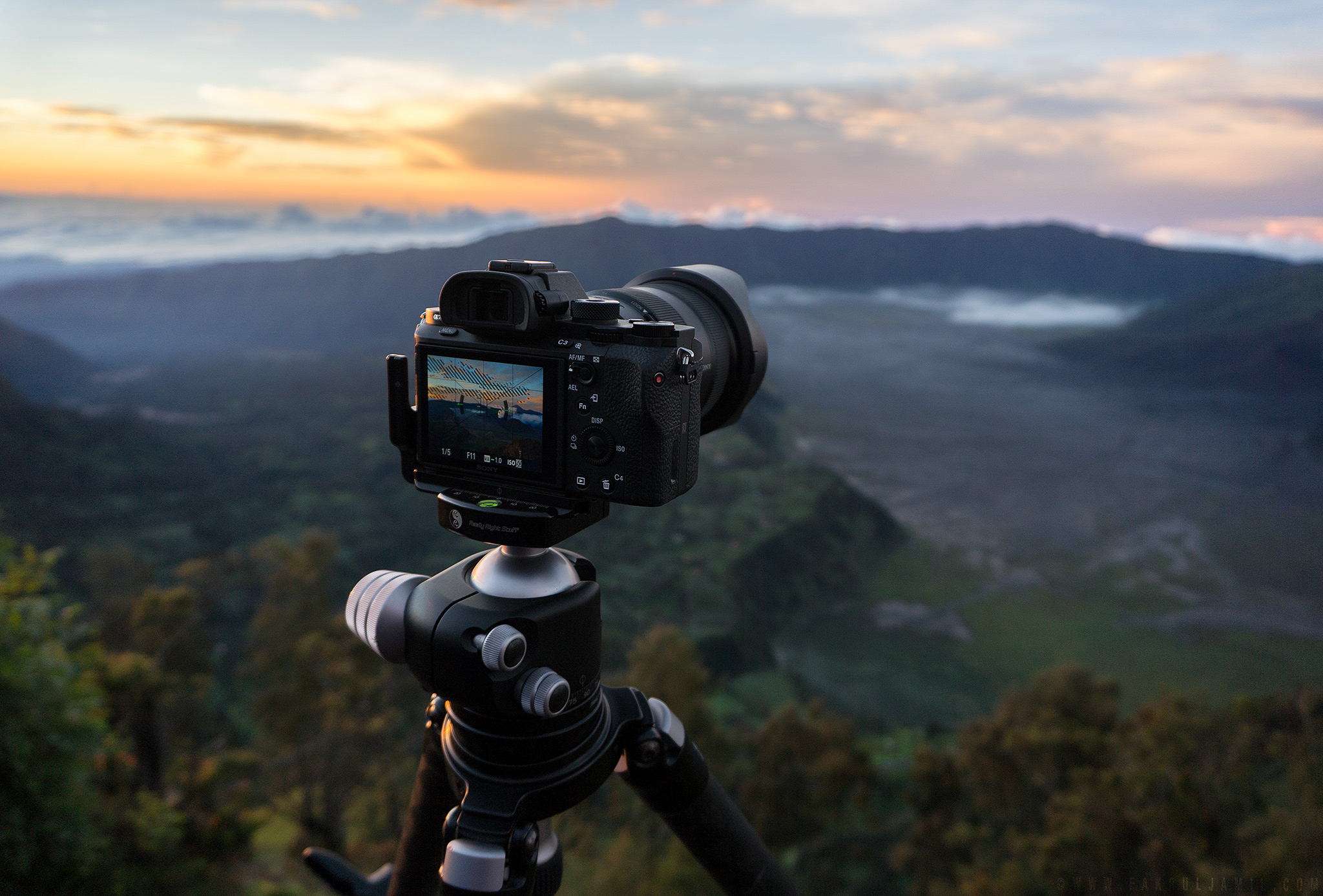
As you can see, the sun rose slightly to left of Mt. Bromo. But the strong colours did reflects all the way to the volcano hence the final result below. I present to you….”When Earth Meets Sky” a panoramic image generated from 8 vertical shots taken with Sony A7RM2 + FE 24-70 f/2.8 GM lens. I just had to take panos because I wanted to capture everything for this shot. Final resolution for this pano is 12,600px wide!
My other camera, Sony A7SM2 was running on timelapse mode and managed to capture the beautiful sunrise display changing rapidly. We waited for quite sometimes and I when I was about to pack all my gears, I saw this view of “The Great Mountain” of Mahameru standing tall behind Mt. Bromo.
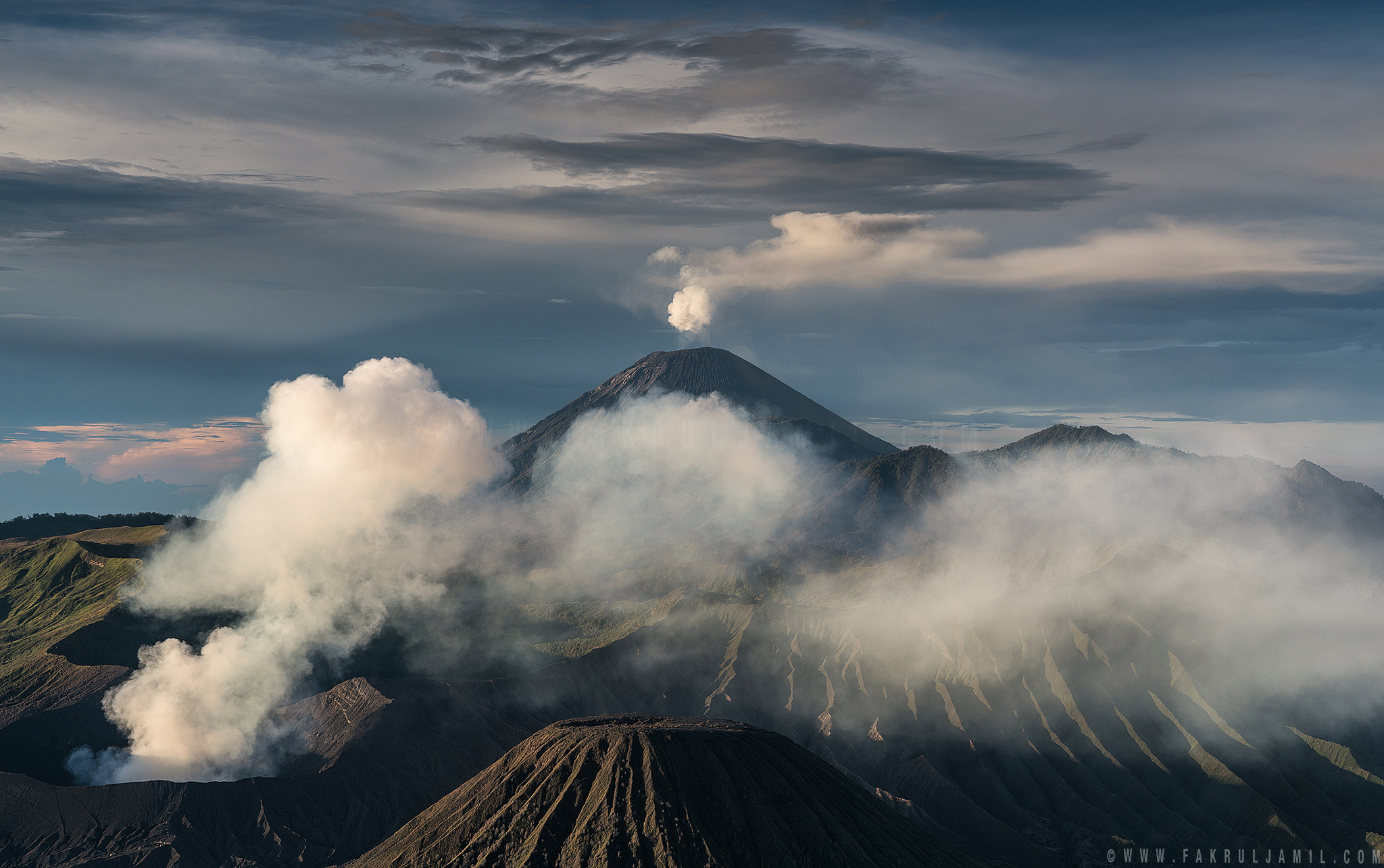
Our next destination is to the Savannah Field. The place is actually a field of grass surrounded by the hills and is also one of the attraction when visiting the national park. But we encounter some problem when we are on our way to the location. It rained the night before so the track road gets a bit wet and muddy. Our 4×4 driver gets a bit clever and thought he could get through the muddy road. But in the end, he got us all stucked!

We had to abandoned our 4×4 and wait for another truck to pass by to get help. Turns out there were few other trucks that got stucked too.
After that, we continue our journey to Savannah Field. Its just a short drive to reach there. But we did not go all the way in as Pak Irsam took us to one of the best viewpoint (I guess) available in the park. It looks a little bit like the famous Dolomites in Italy. Except there is no huge mountains in the background. But I guess I can call this as Asia’s Dolomites…
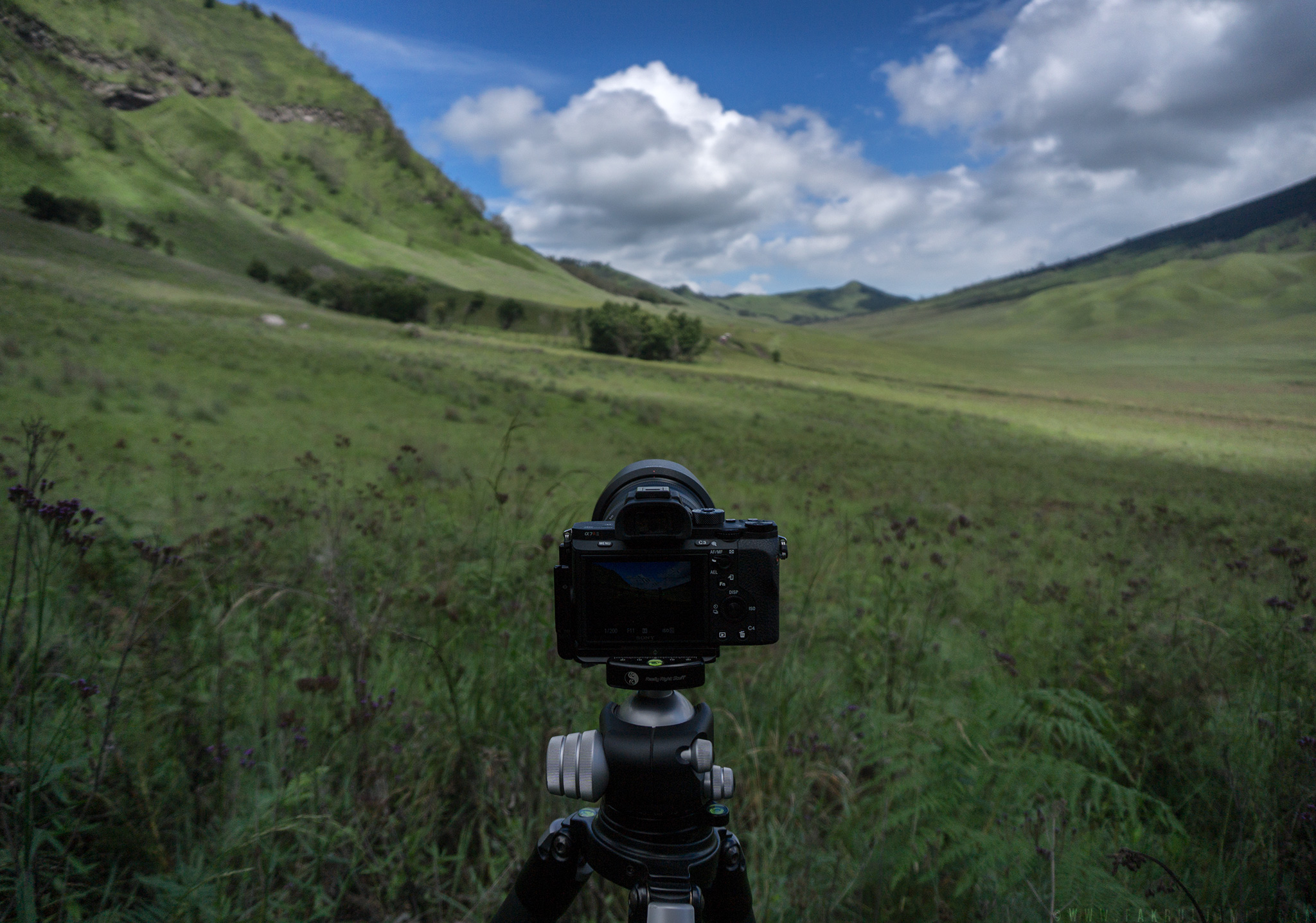
And of course, a compulsory group shot. Credit goes to our guide, Pak Irsam.

After spending a few hours in the field, we head back to our hotel, Cemara Indah for breakfast and rest. The best thing about our hotel is, the view itself is facing Mt. Bromo. We had our sunset shooting just from the hotel lookout point. Here’s my camera running on timelapse mode.

Jemang and Pak Zahar admiring our hotel view. Azmi is out of the frame as he was standing slightly to the left of this photo. I guess he gets the best composition, or same.
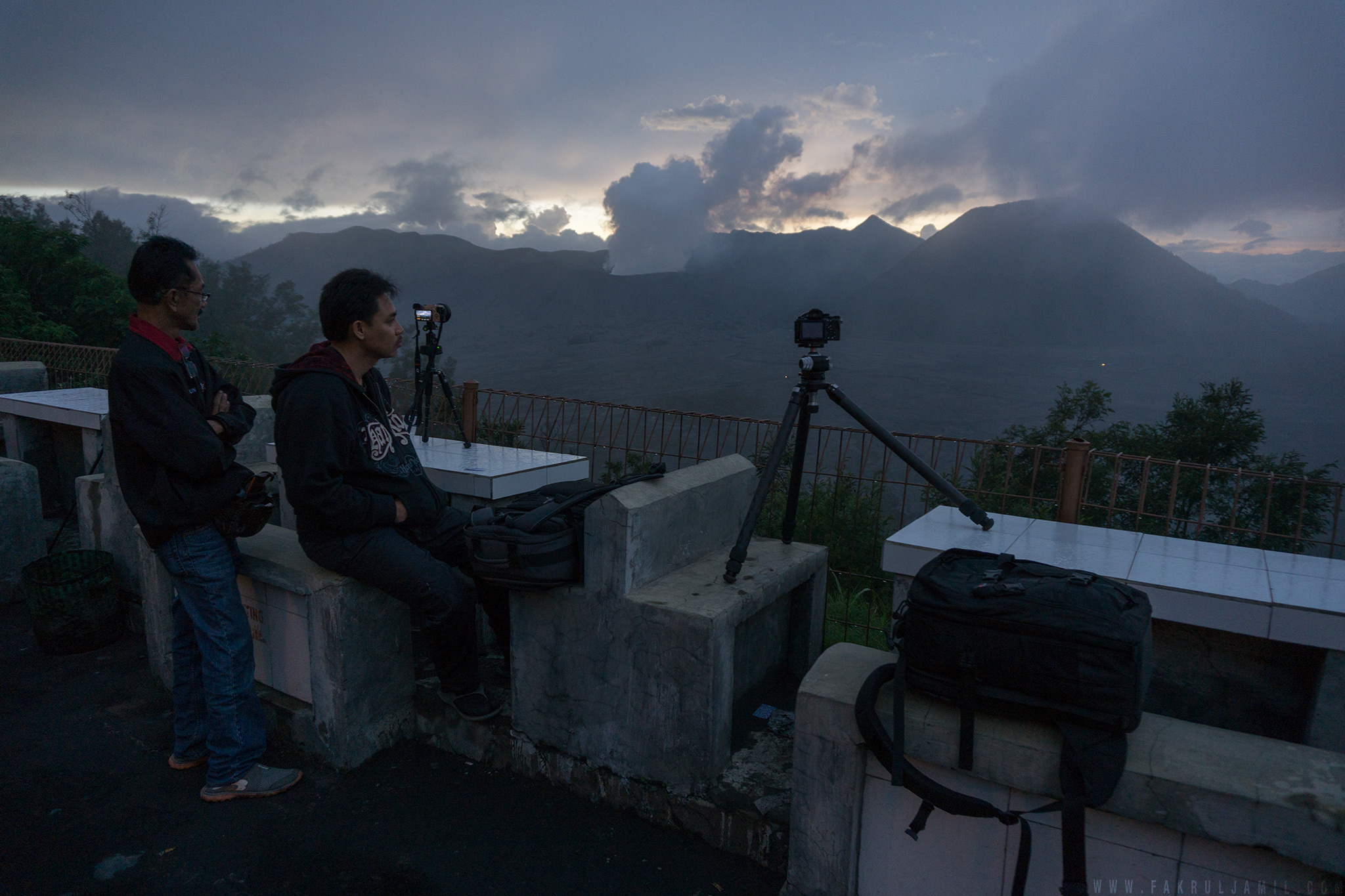
This session wrapped our short visit to Mt. Bromo. The next day before checking out, we went out in the morning for quick shoot in Ngadisari Village. But, nothing much to share so I just skipped that.
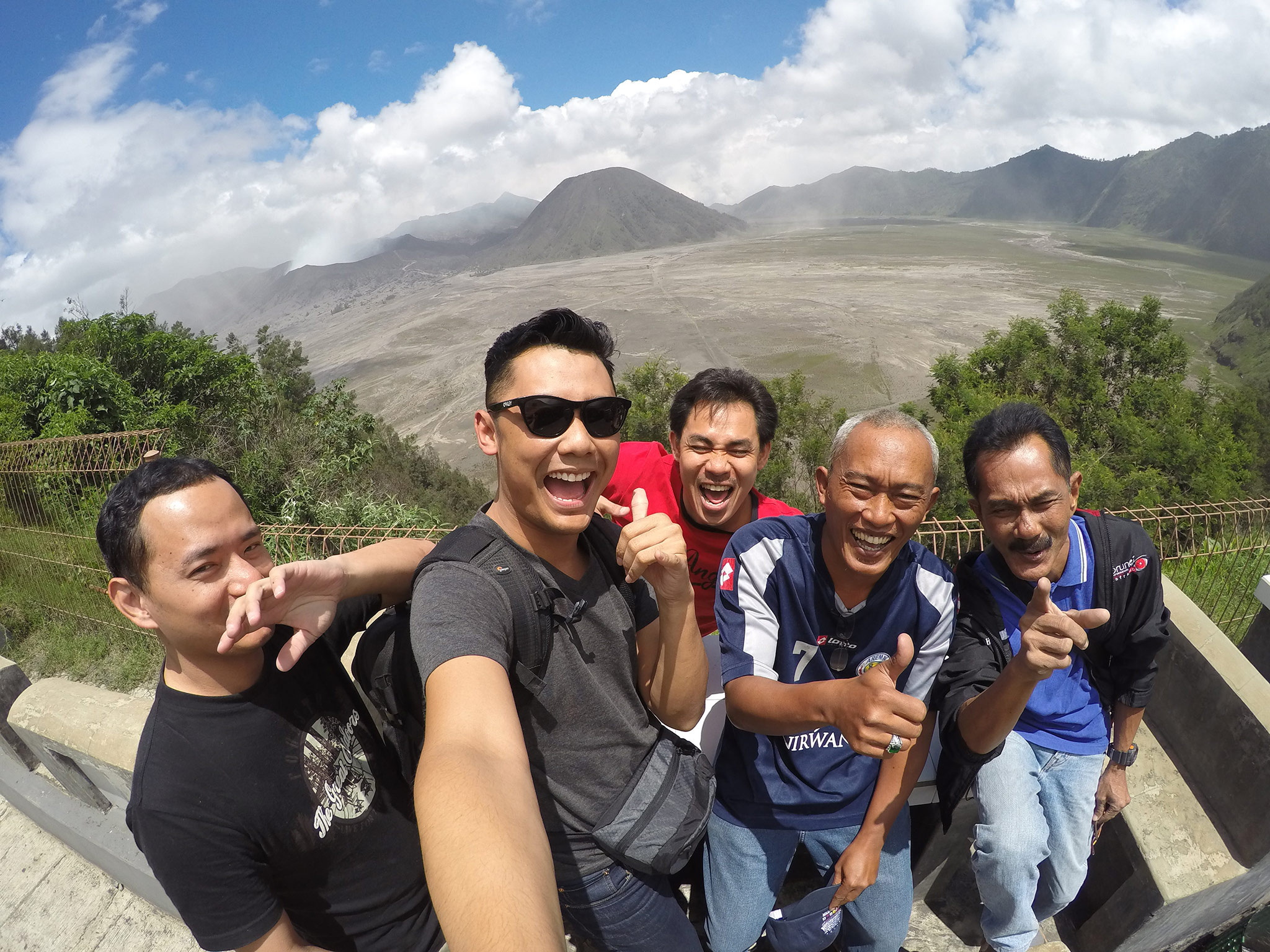
Thank Sony Malaysia for the opportunity to shoot with the new FE 24-70 f/2.8 G-Master lens on this trip. The new lens has successfully kept my ultra wide angle in the bag most of the time.
I hope everyone enjoy this post and hopefully it will inspire you to get out and shoot. Feel free to share and spread the love for landscape photography!
Until my next post, assalamualaikum wr wbt.
I’m proudly to announce that I have recently partnered with Nisi Filters Malaysia and they are kind enough to send me a cool kit for me to play around.

- 100mm filter holder system
- An adaptor ring (72mm for my UWA lens)
- ND1000 aka big stopper
- Circular Polarizer
I heard some good reviews over the internet for these filter. Look forward to give them a proper test over the coming months. Thank you Nisi Filters Malaysia!
Recent Posts
- LIVE INTERVIEW: Future Traveler & Landscape PhotoFebruary 11, 2023
- Sony FE 14mm F/1.8 GM for Landscape PhotographyJanuary 22, 2023
- Alpha For Landscape - Timelapse PhotographyJanuary 16, 2023
- LIVE INTERVIEW: Future Traveler & Landscape Photo
Instagram
Popular Posts
- Milky Way Hunting in Chuping, PerlisJuly 12, 2016
- Landscape Photography Adventure to NZOctober 18, 2014
- Kelanang's Story - Cast AwayFebruary 8, 2012
- Milky Way Hunting in Chuping, Perlis

